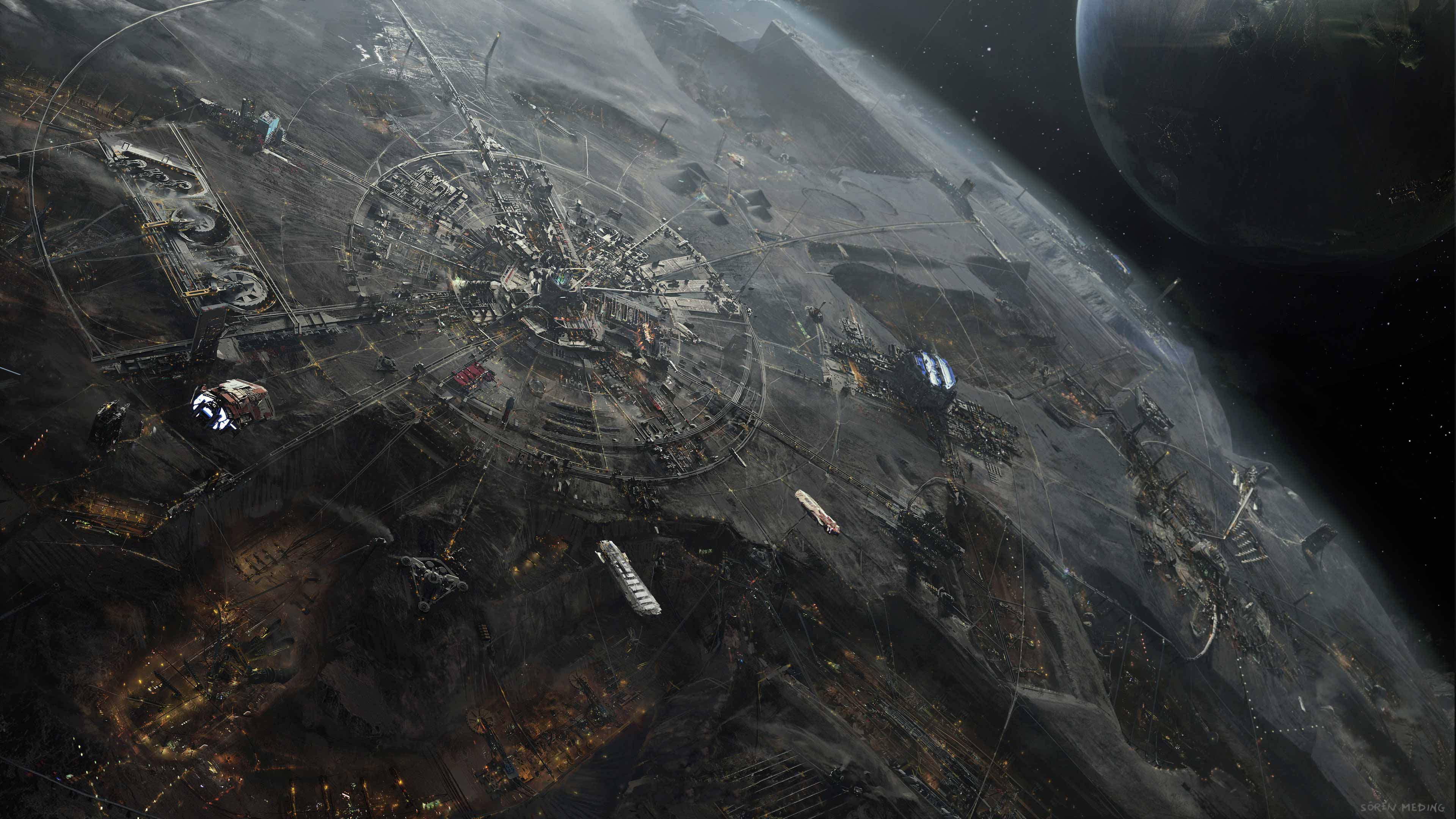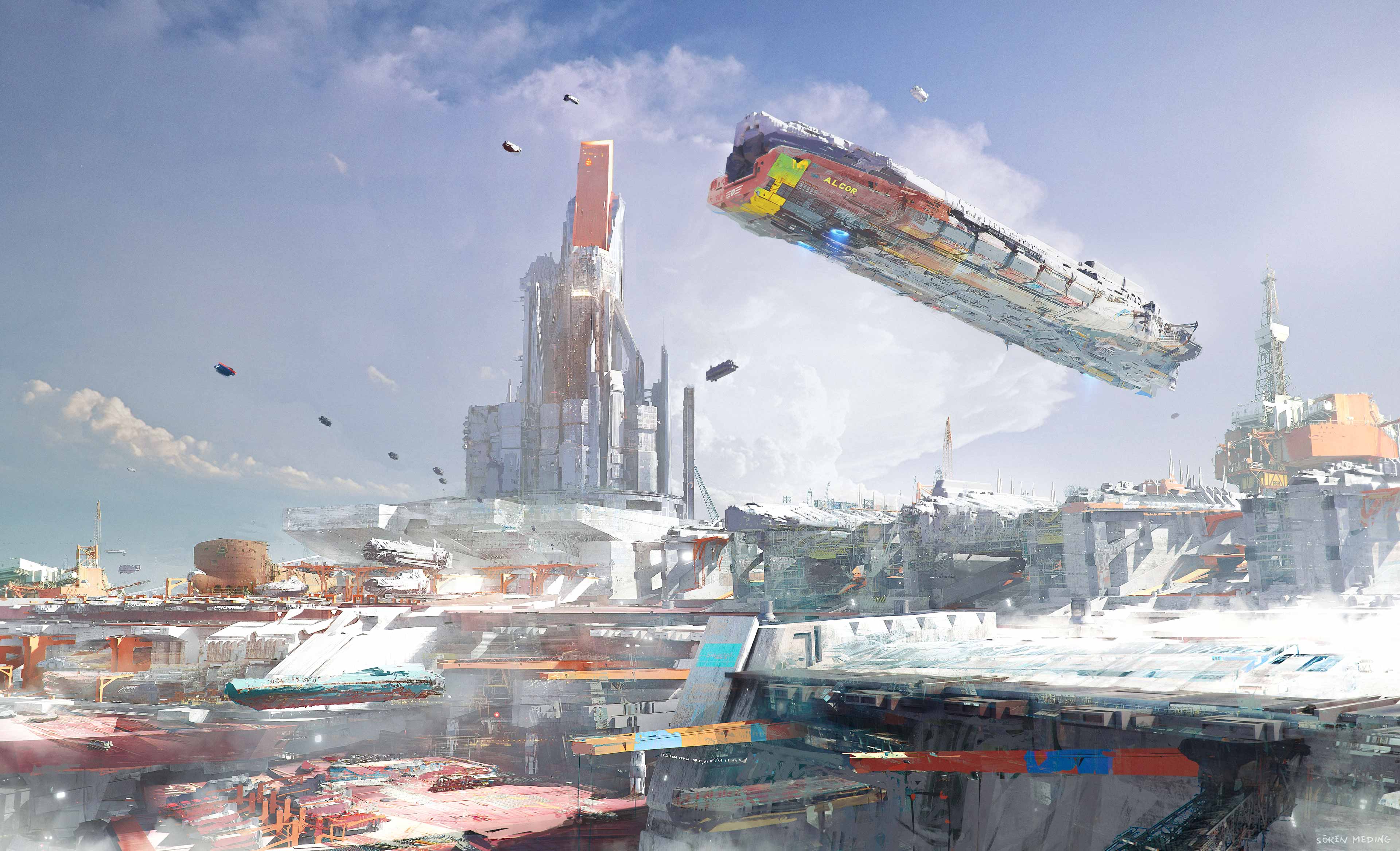
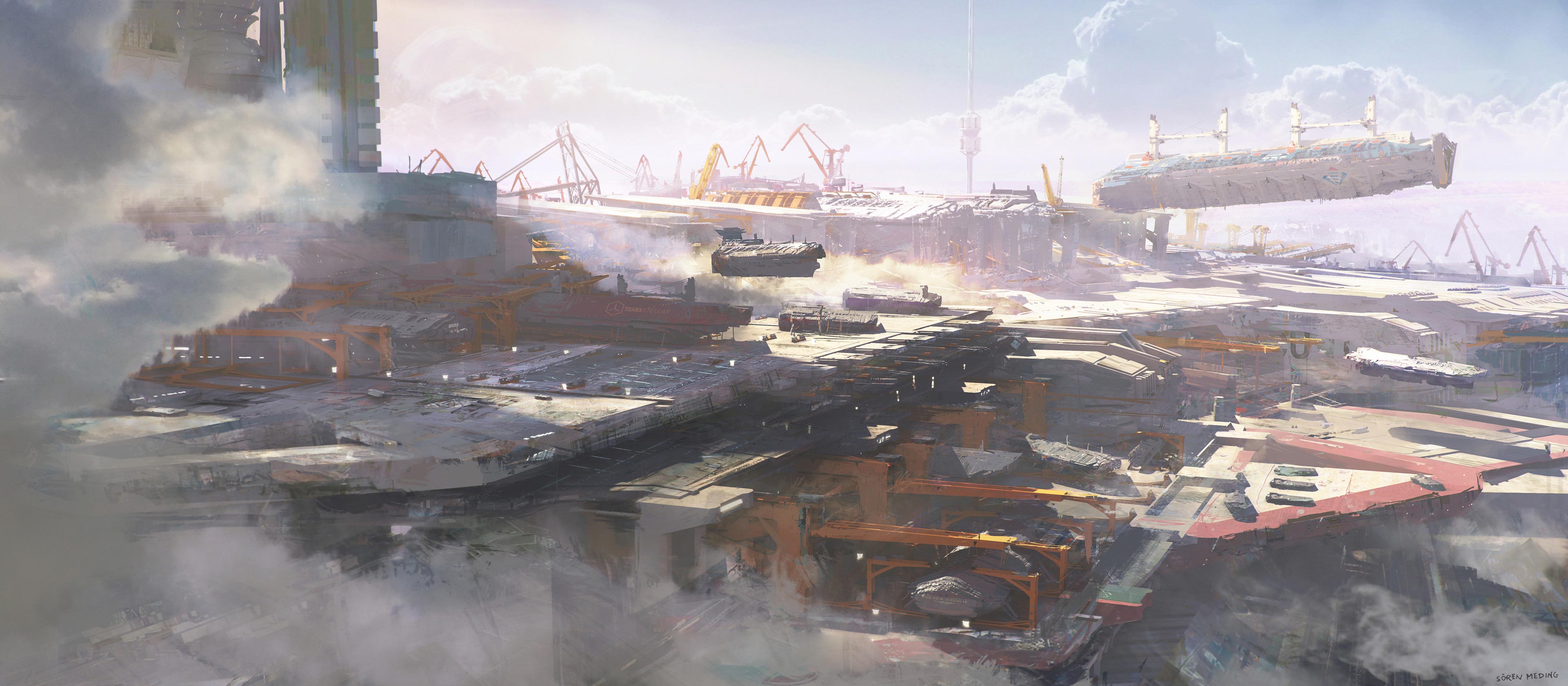
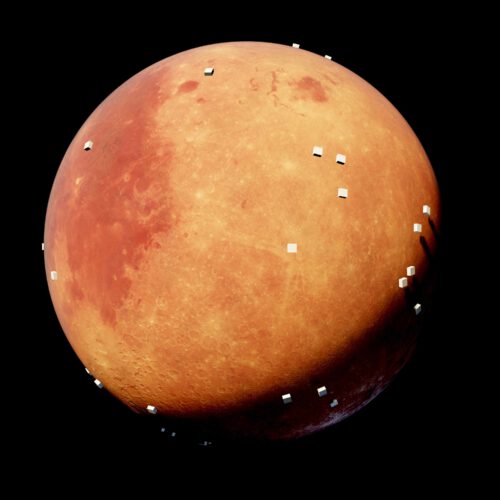
Above: Scaling too tiny, hard to read from planetary view.
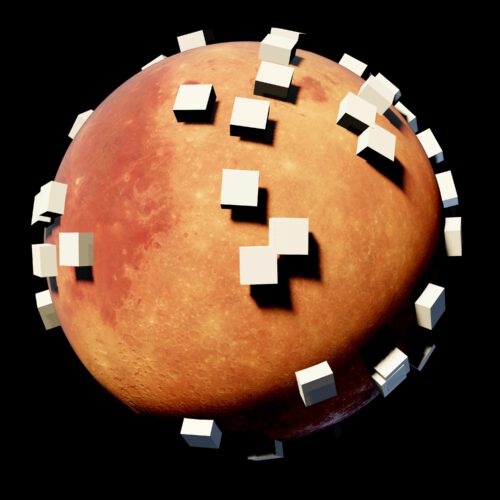
Above: Scaling sweet spot. Good readability form planetary view, countable and relatable for players.
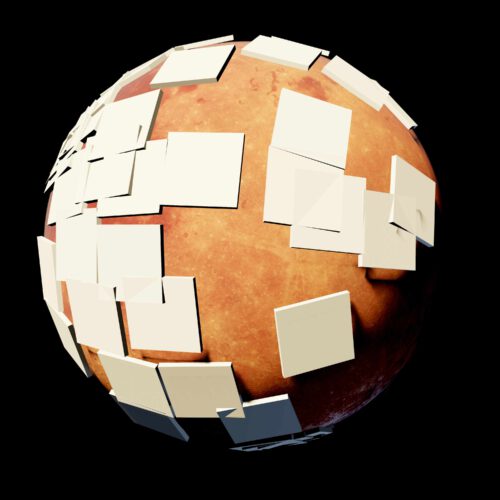
Above: Scaling too large, overlapping makes it impossible to read.
Scaling
The briefing was clear: we needed a system and design for space mining as a core gameplay feature, using large ground stations as operational hubs, both up close and from a planetary perspective (think top-down strategy game). The goal was to accommodate dozens of mining stations on a single planet.
One self-imposed challenge was to avoid “gamey” scaling. All buildings and structures were meant to be several kilometers in size, large enough to be clearly visible from a planetary view. Naturally, this led to facility dimensions comparable to the scale of entire Earth-sized nations.
So where do you begin with a task like this?
First: How big is the planet?
Second: How tall do the stations need to be to read clearly at scale, both from orbit and on the ground?
Images below: mockups once the scaling research was complete. Note the rising dust clouds above the mining facilities, visible even from space (planetary view).

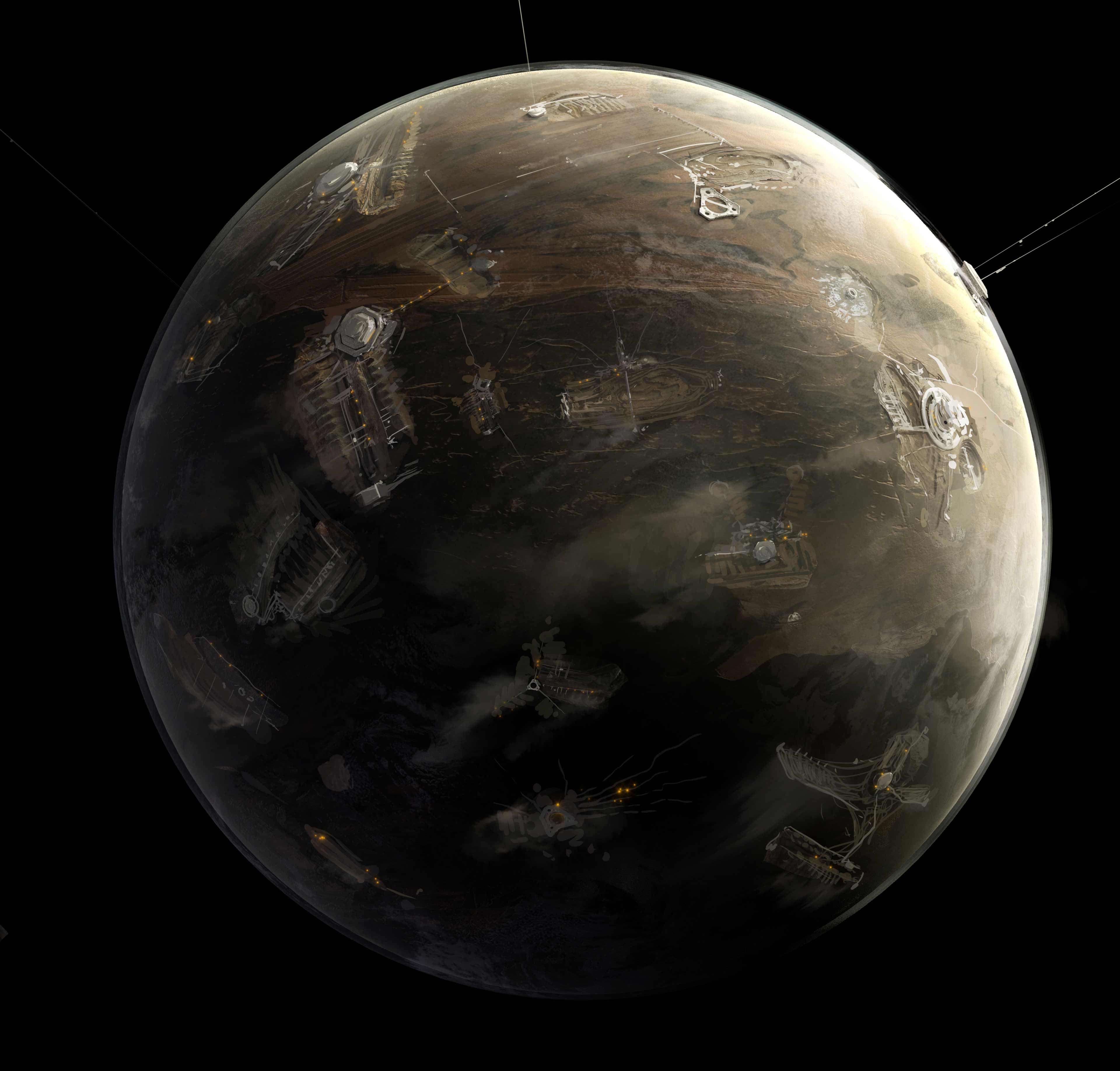
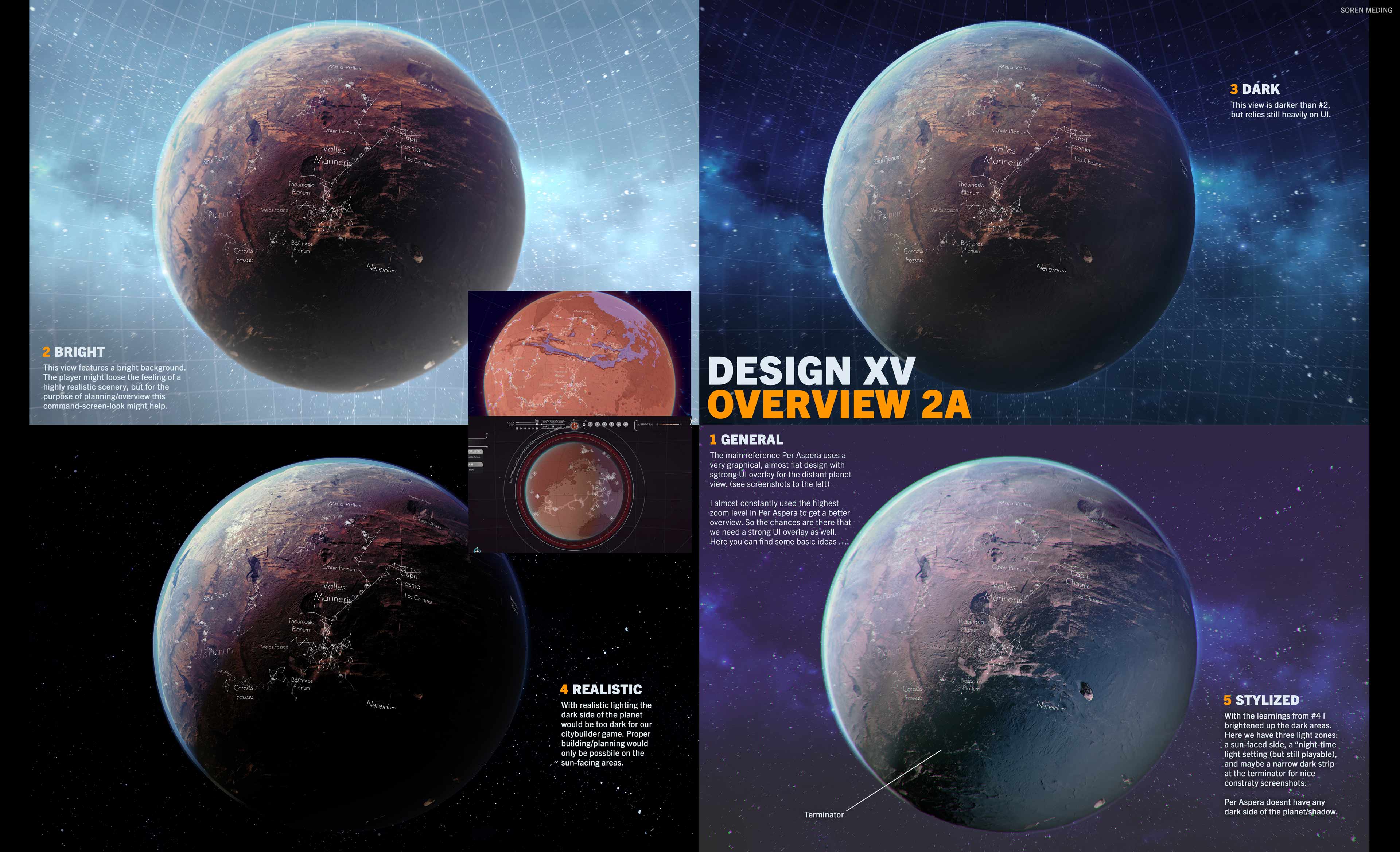
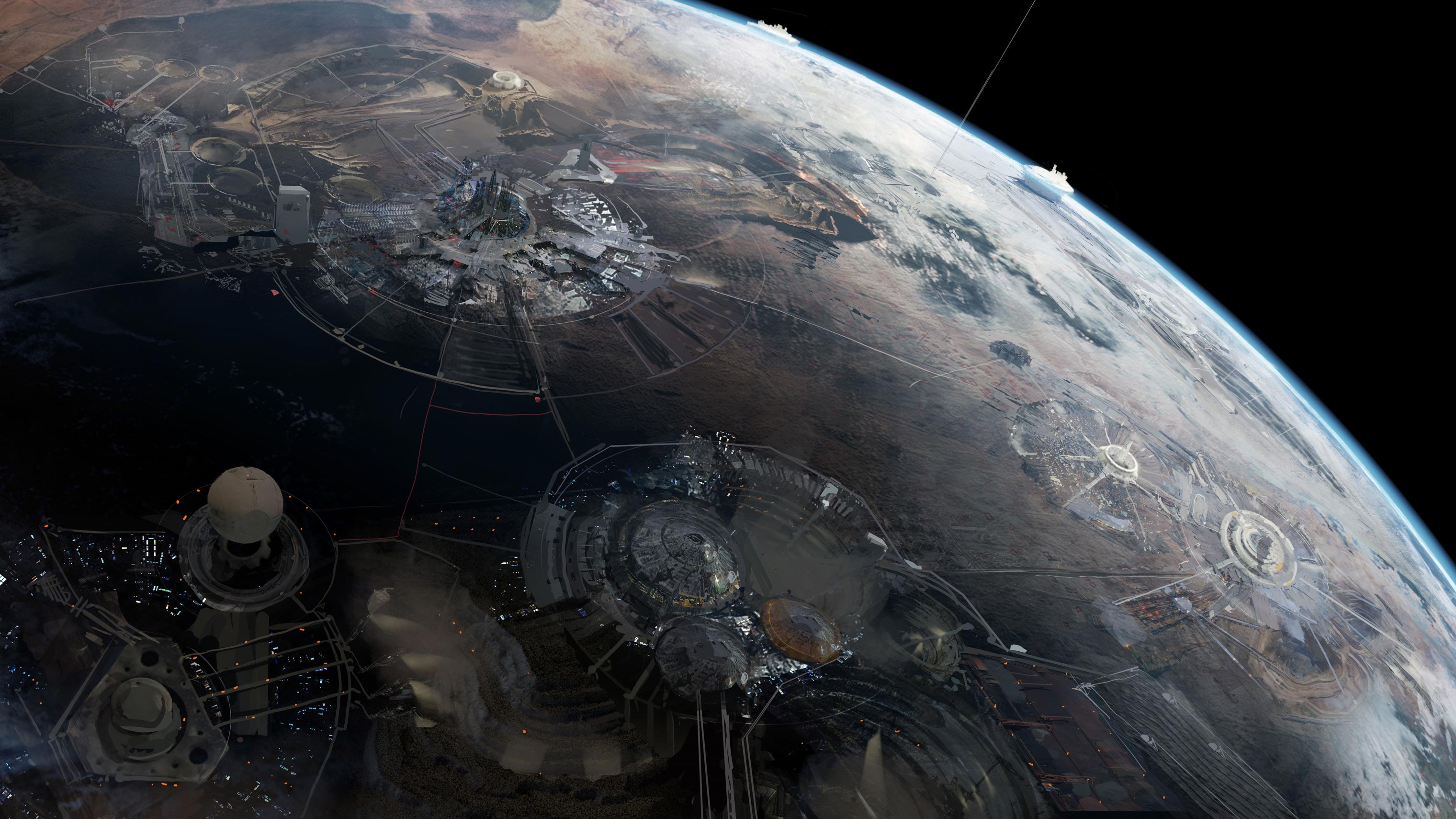
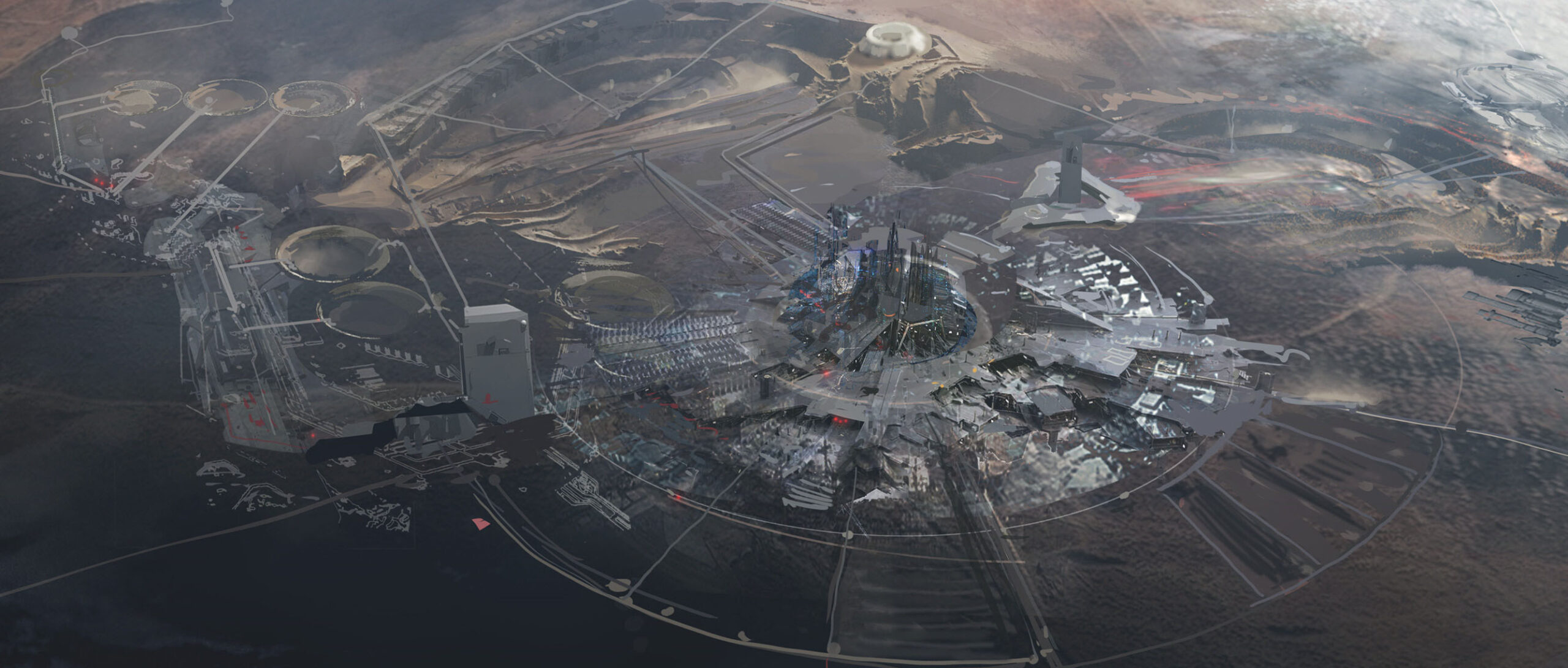
First concepts
After the scaling phase was complete, I created this mockup shot from a closer perspective near the planet’s surface. The concept was well received, and I still like it myself. It showcases a range of ideas: vertical cities, space elevators, large, clearly visible open-pit mining zones, as well as urban areas and settlements.
The planet itself is much smaller than Earth, think more along the lines of the Moon.
In the detail callout above, you can see the hub concept up close: a central habitat area with a nearby spaceport, defensive bastions (the triangular shapes just above the center), and refinery and processing units located on the outskirts. Conveyor belts transport mined materials from the surrounding mining zones, including exploration test boreholes, open mining pits, large tunnel drills, and extensive storage facilities.
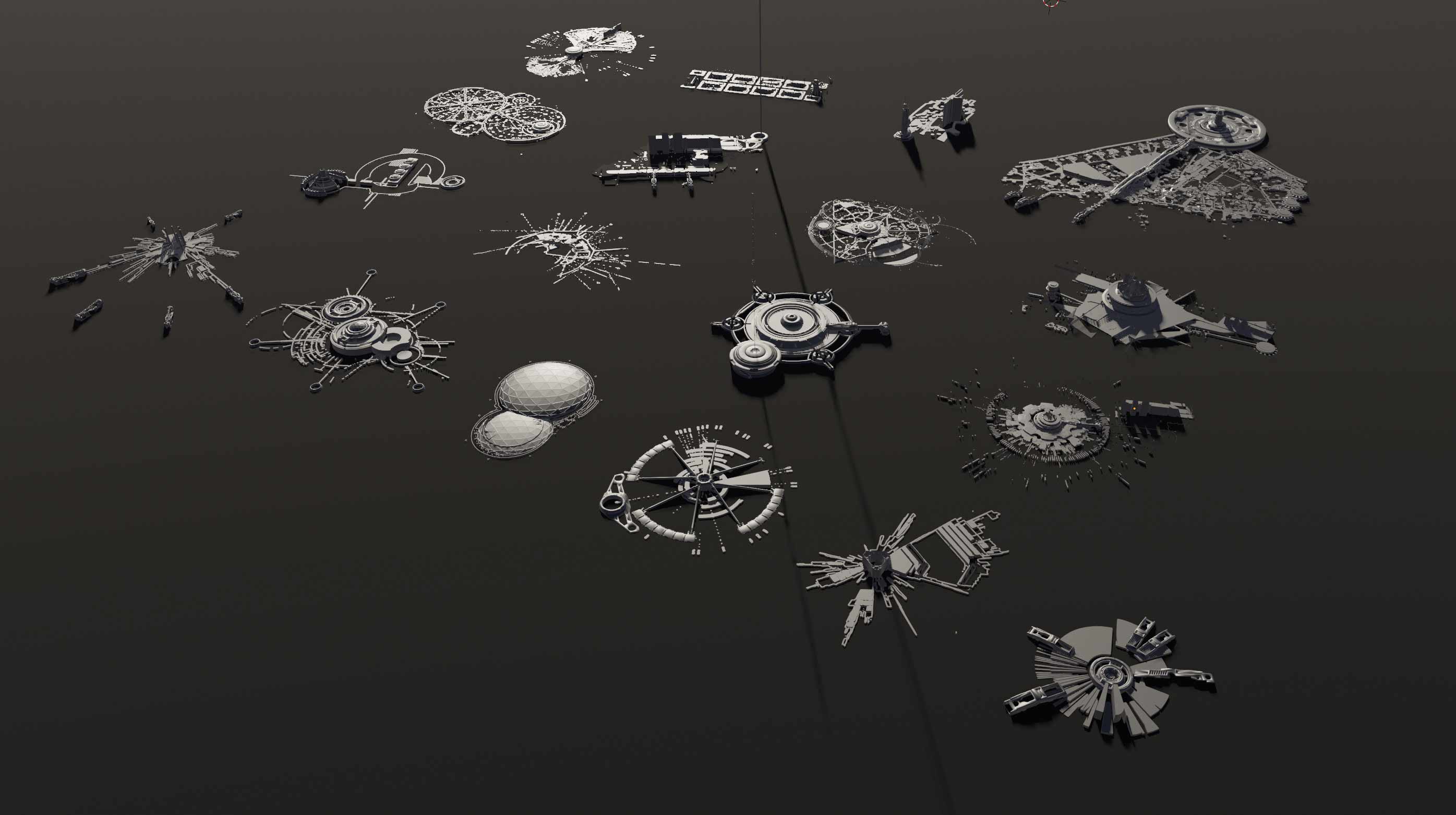
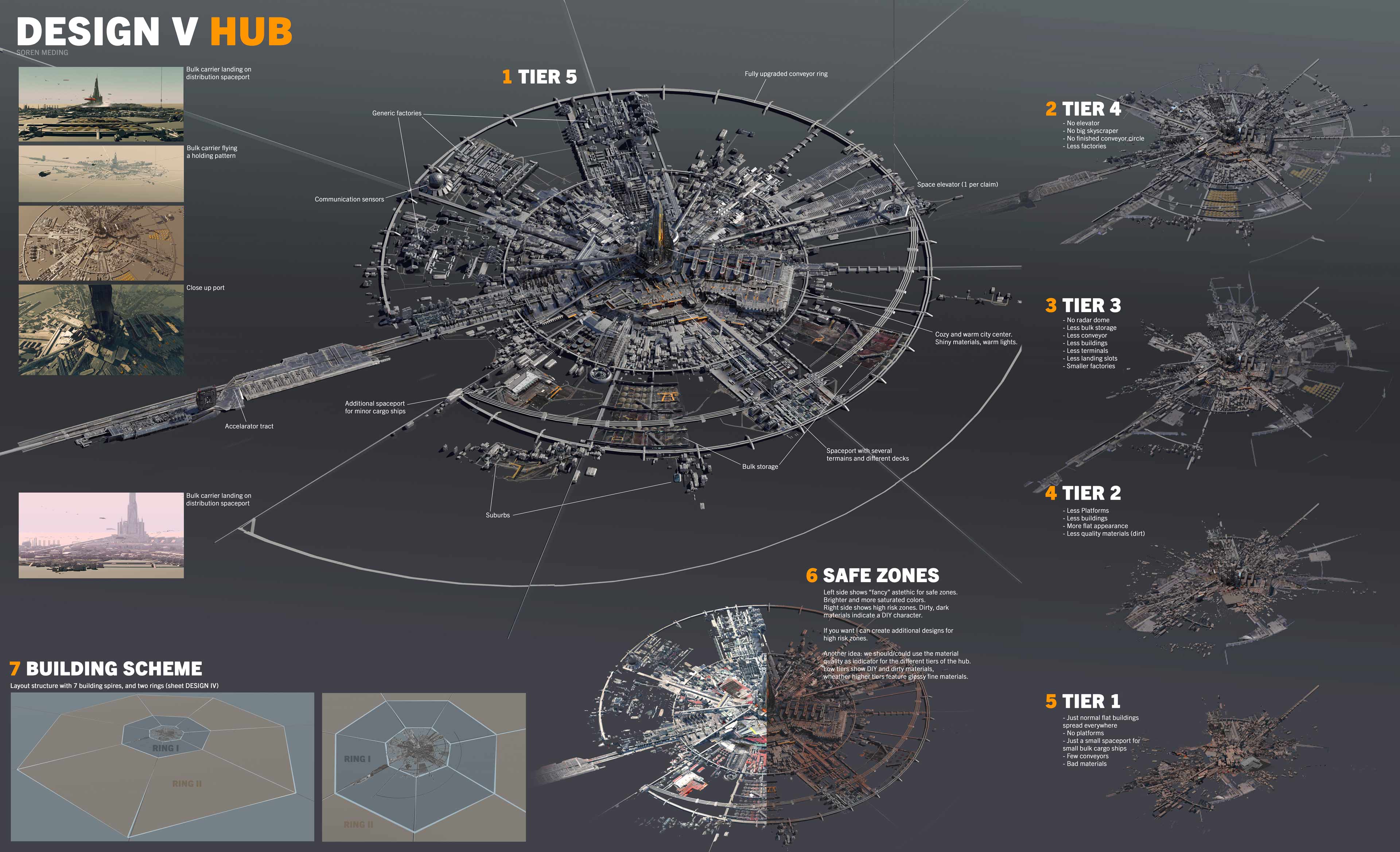
Hub design
You can already spot them in the concept above: the large circular hubs on the planet’s surface, with a central habitat core for colonists.
But what exactly should these hubs look like? A classic starting point would be to use simple geometric forms, triangles, squares, circles: easily readable at a distance.
But I wanted to take a different path. Instead of relying on standard shapes, I based my layouts on real-world airport plans, infographics, and graphic design references, looking for fresh, functional layouts that still felt grounded and believable.
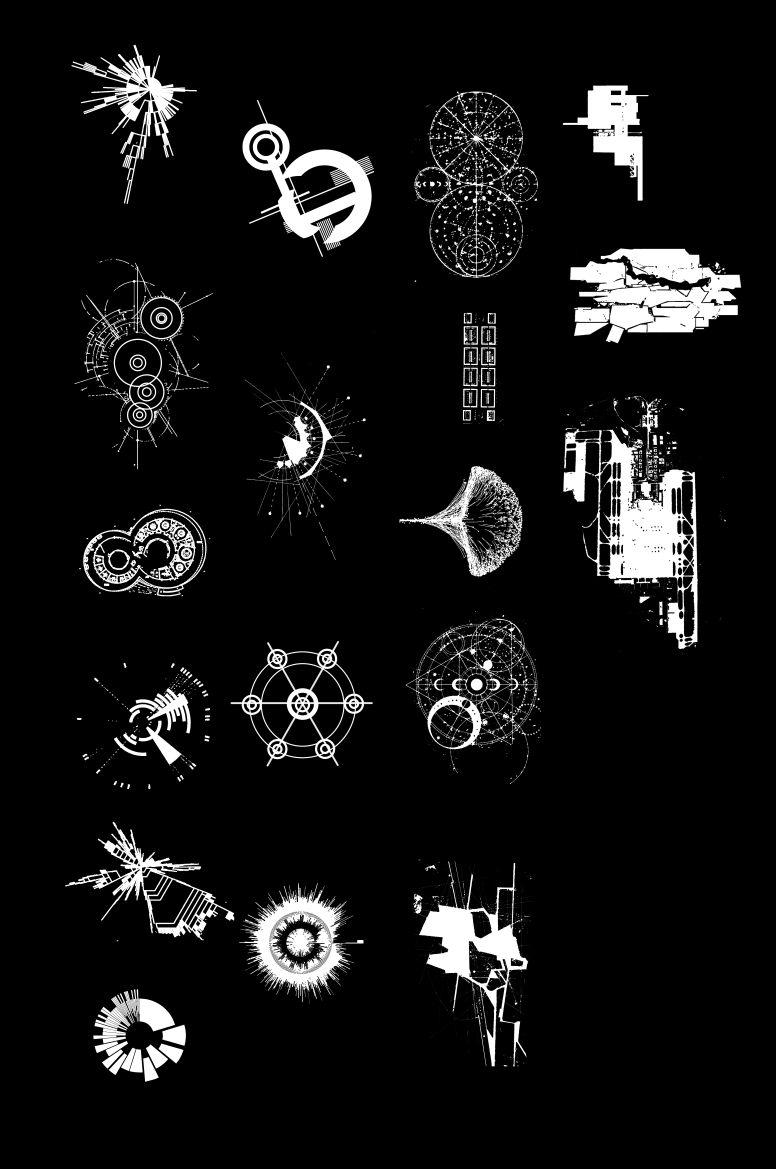
Mining Methods
I wanted to explore more methods of mining and extraction. While there are various techniques used today, blasting and excavators don’t look very appealing from space, not very exciting for a game. So I aimed for something with large, monstrous animations instead. These were my initial findings in this first iteration. More important than small bucket-wheel excavators, however, is dust, a lot of dust. And that dust is clearly visible even from a great distance.
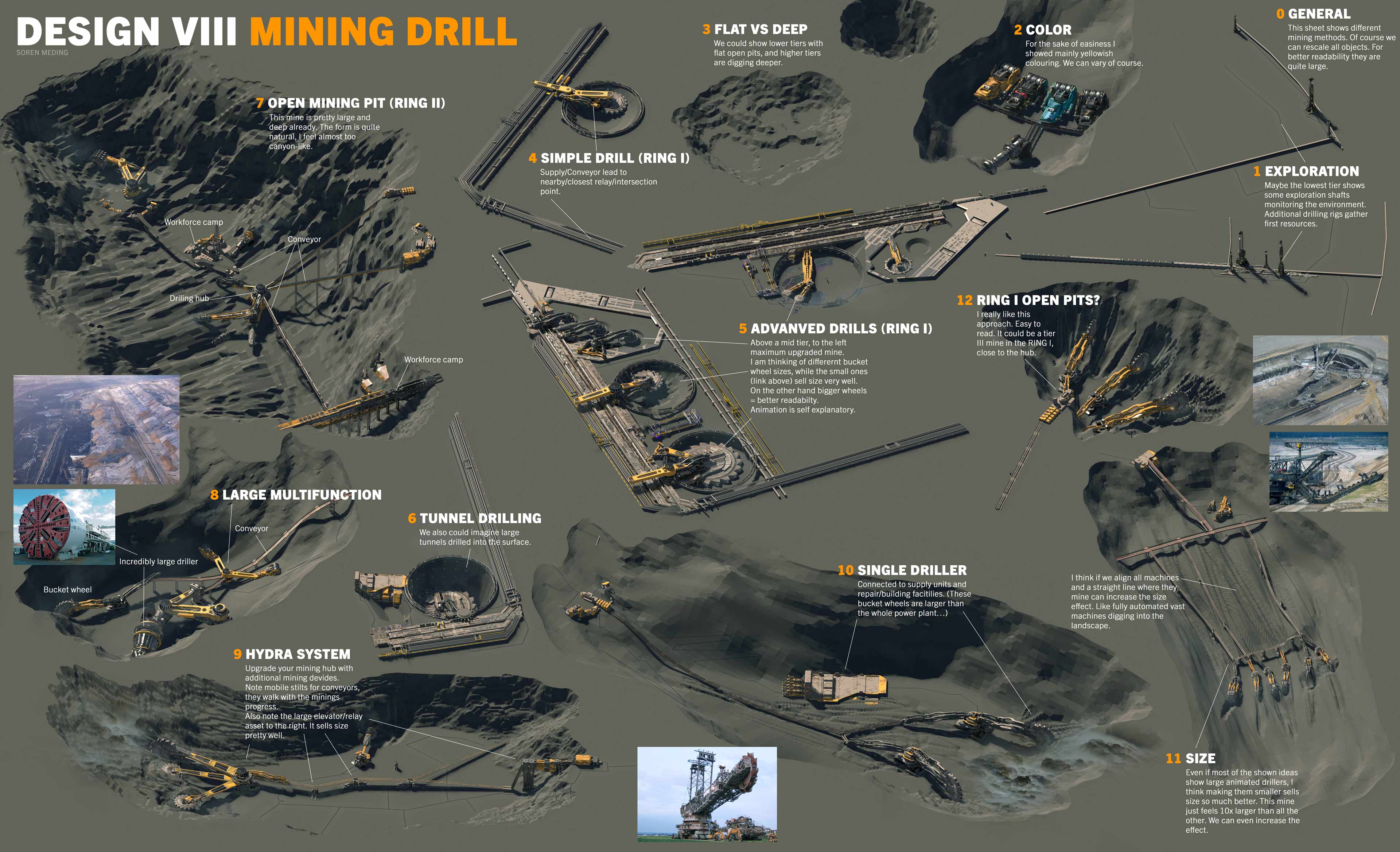
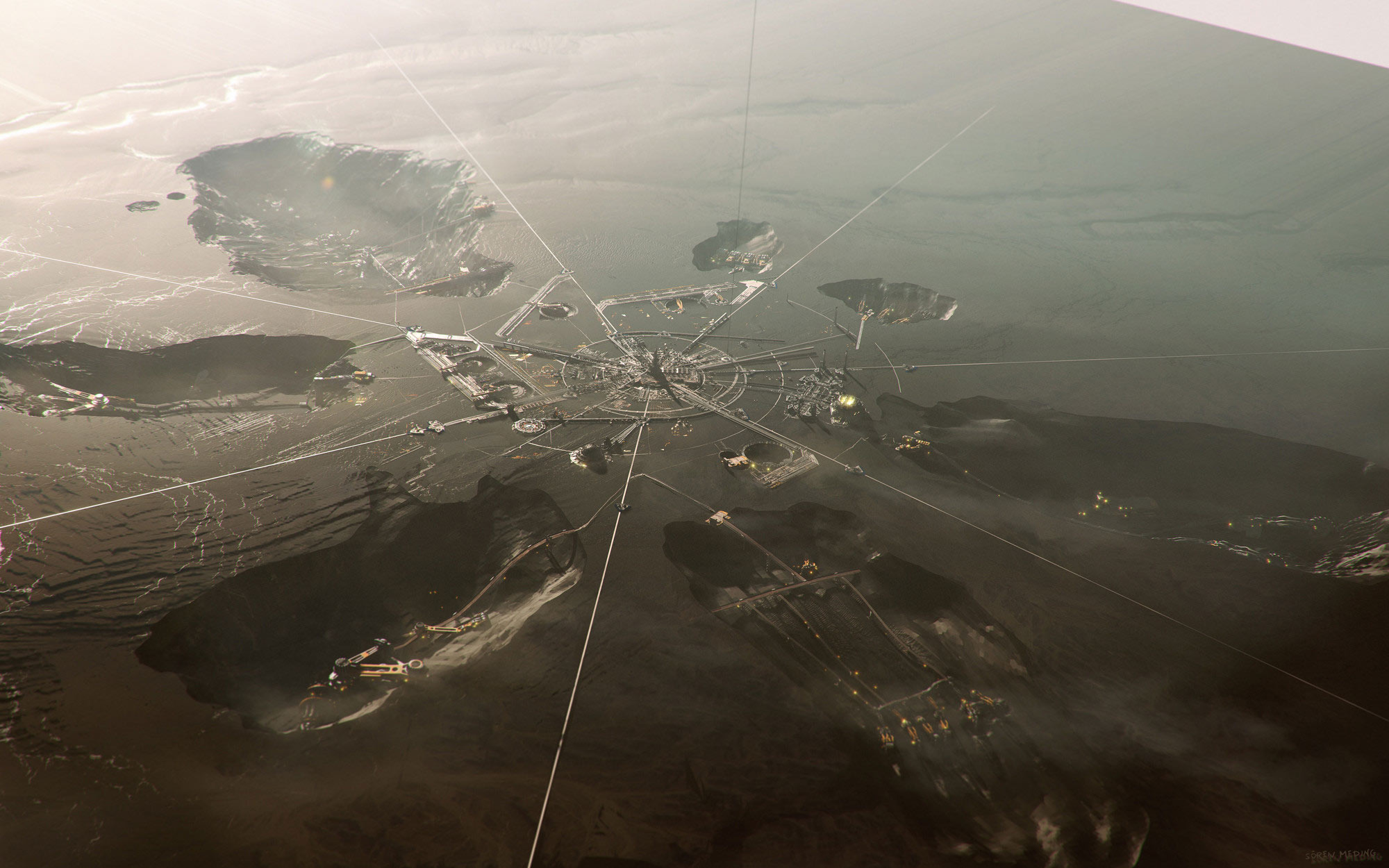
Here’s a glimpse into my further research, but also into other building developments (defensive buildings, power plant, drone factory)
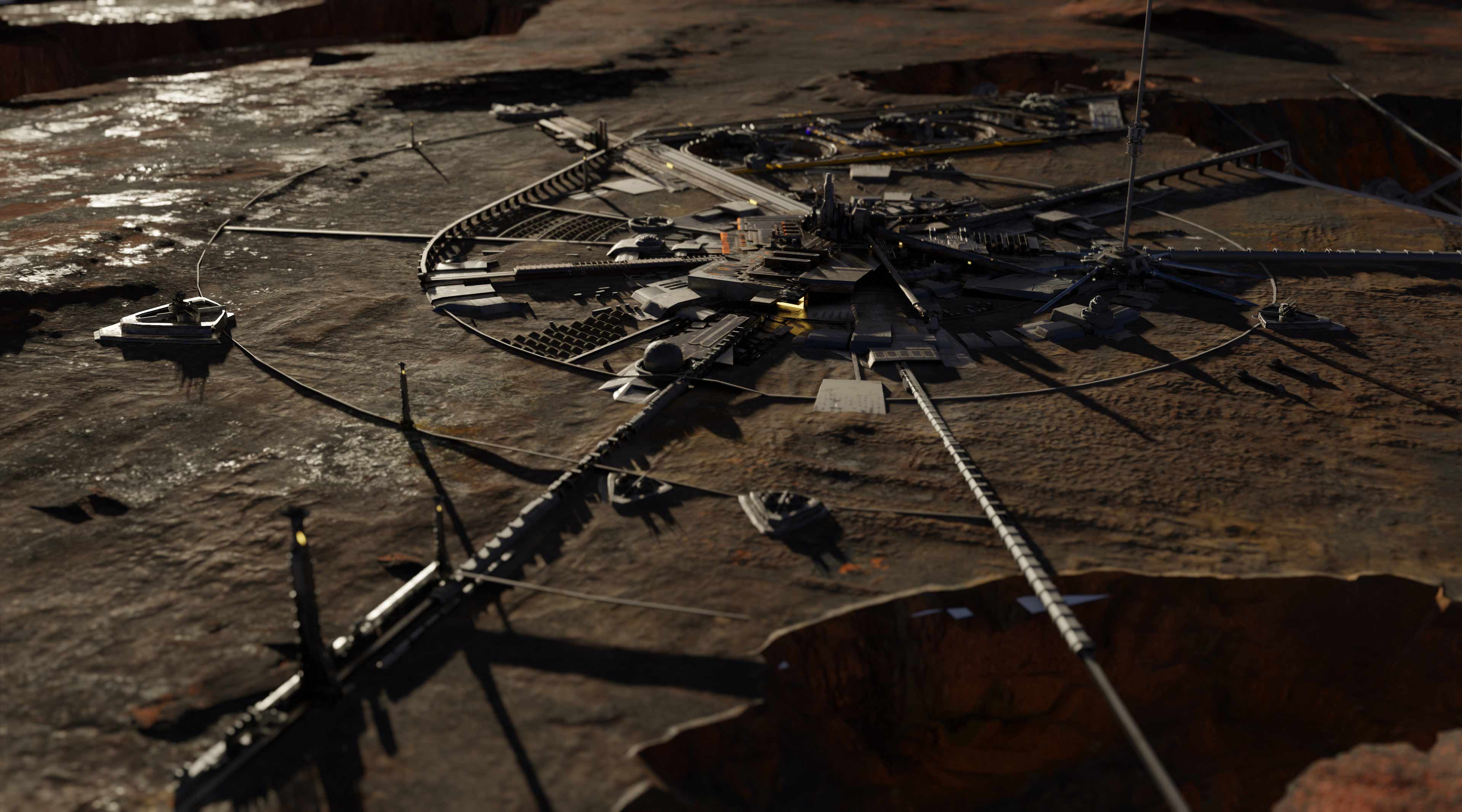
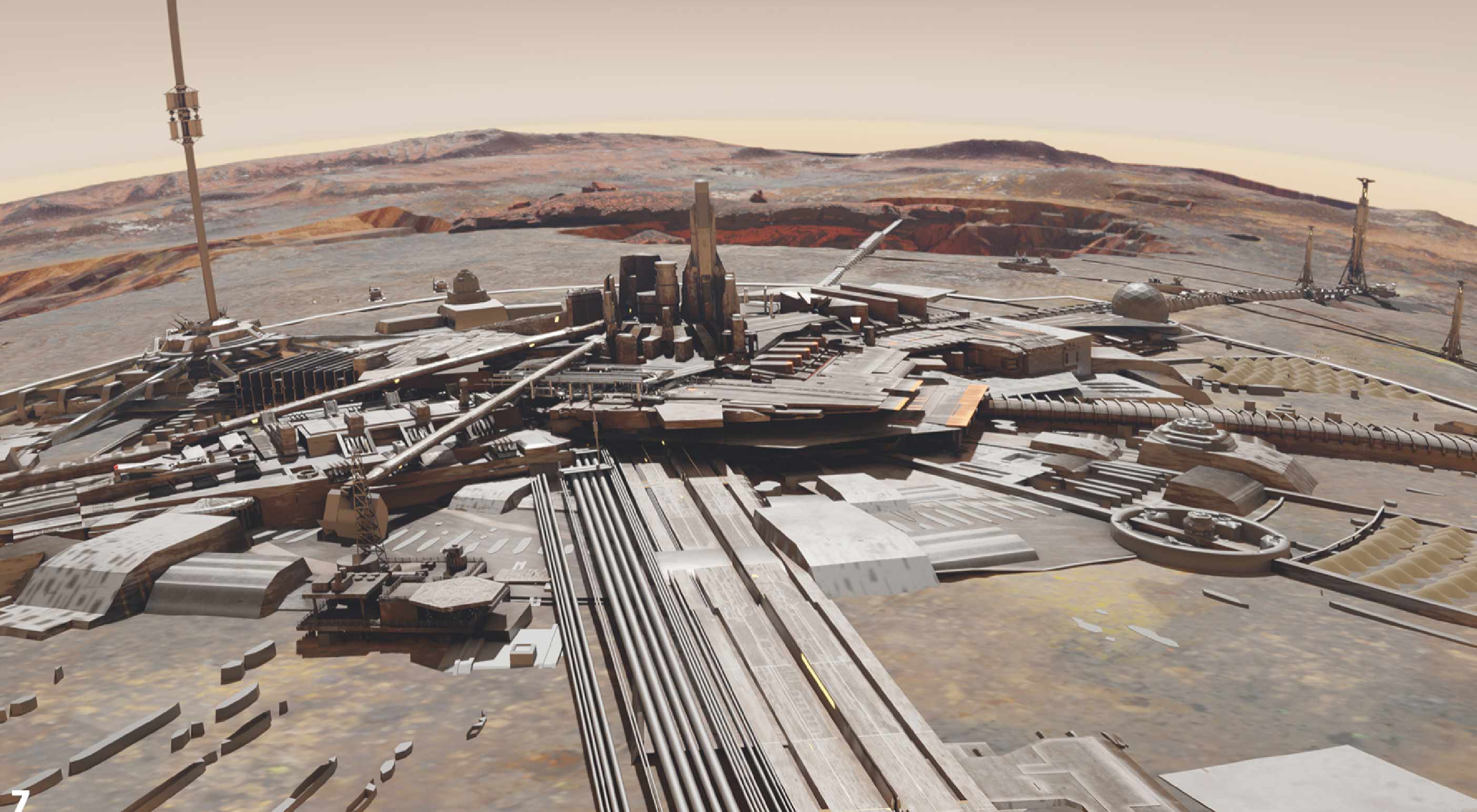
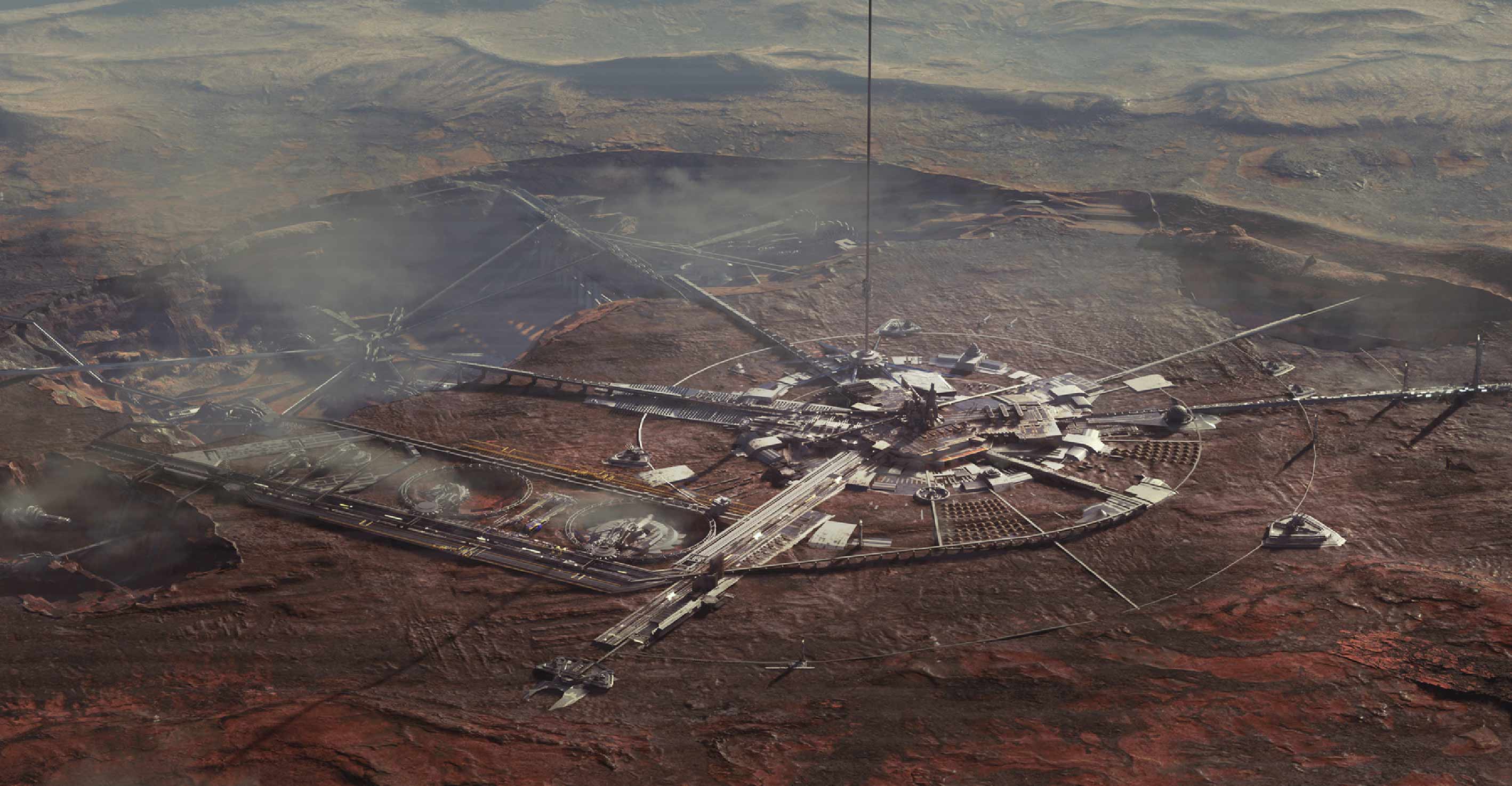
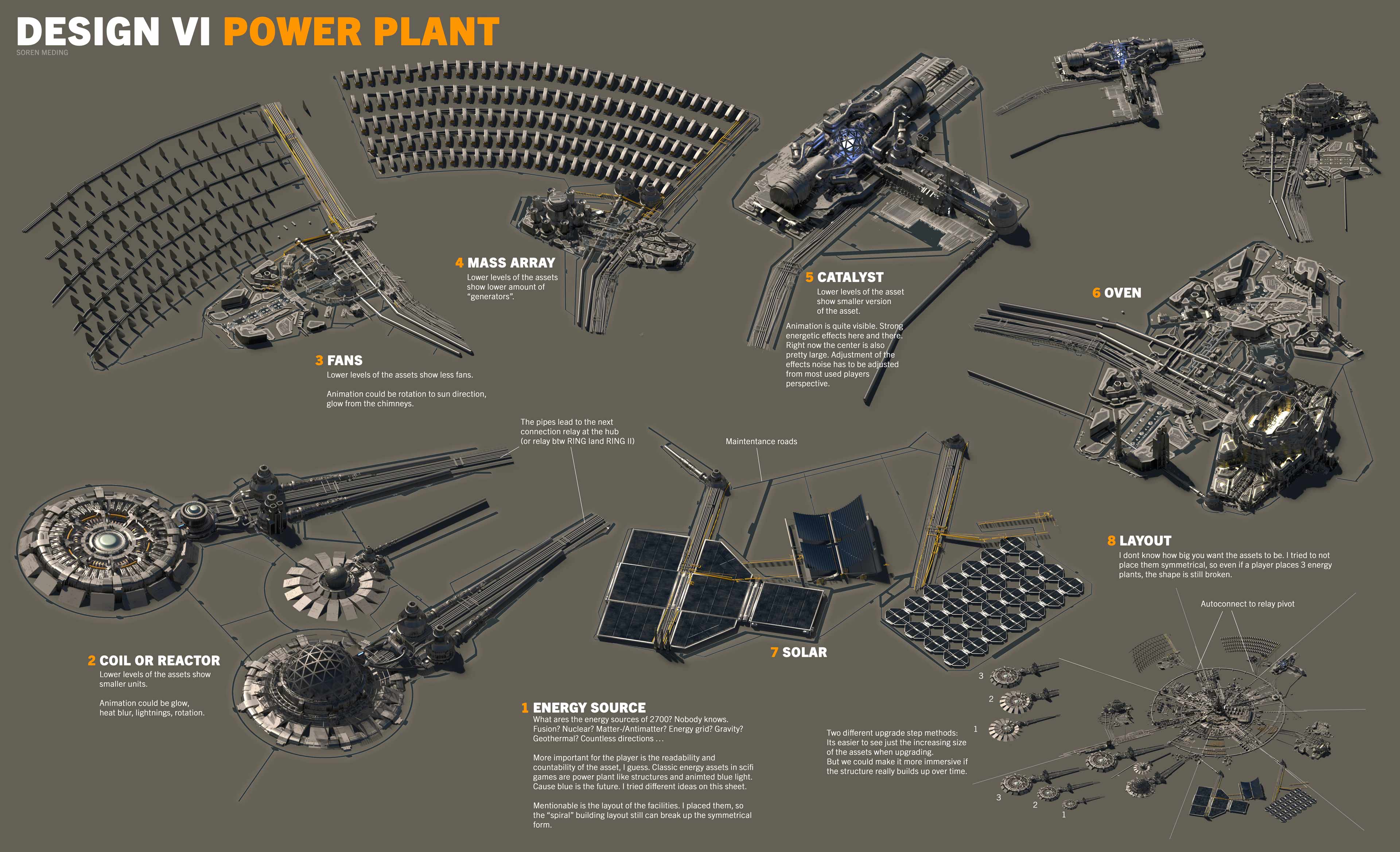
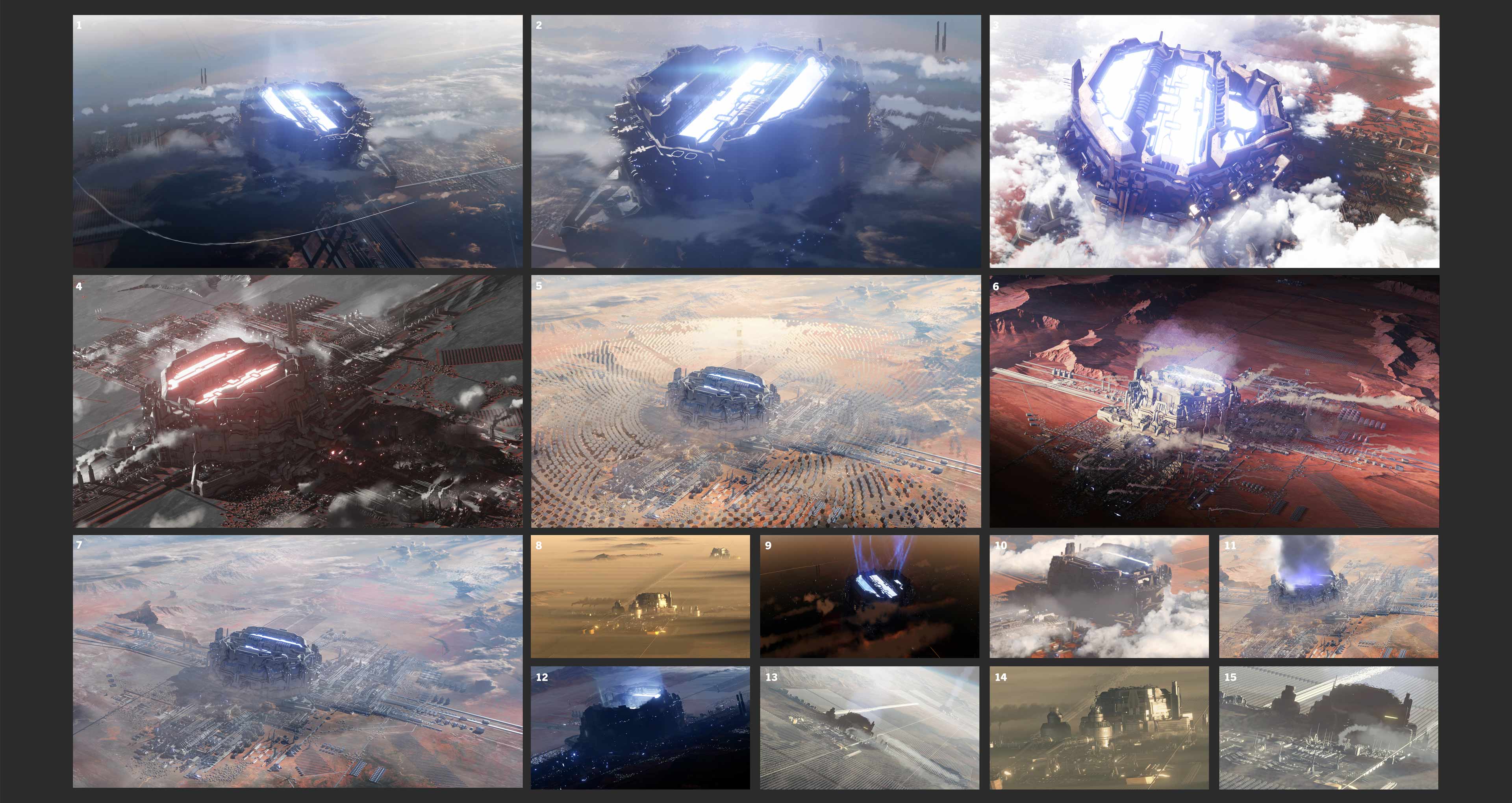
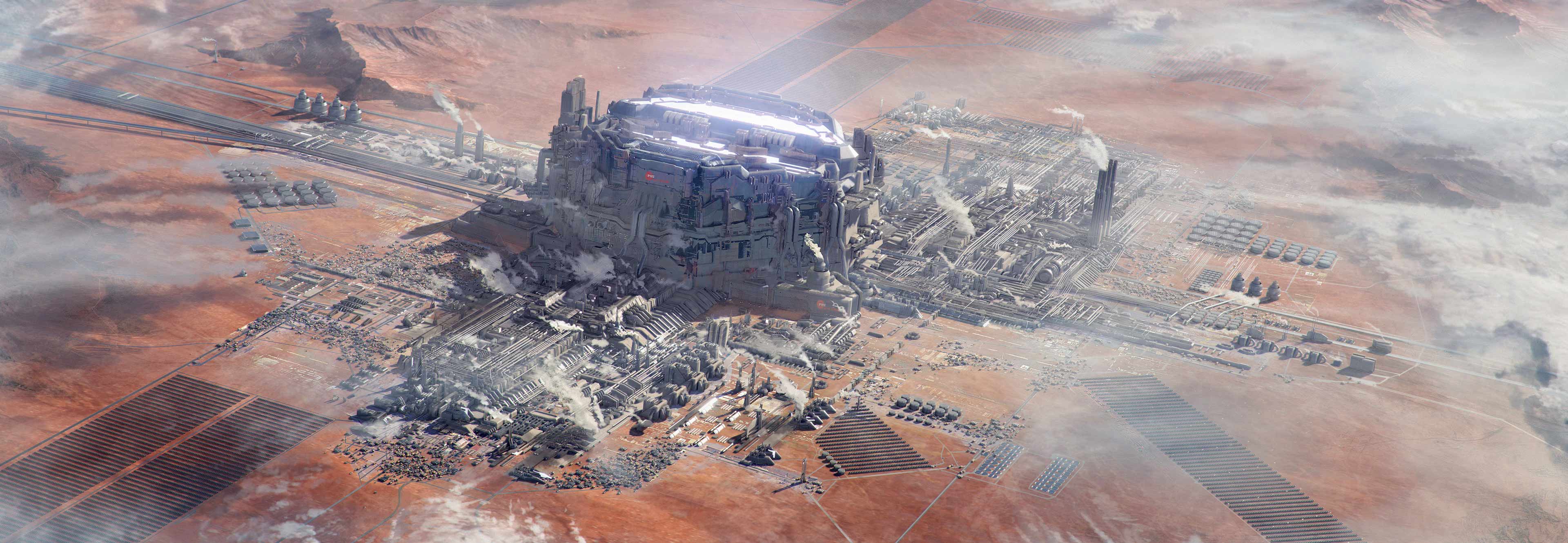
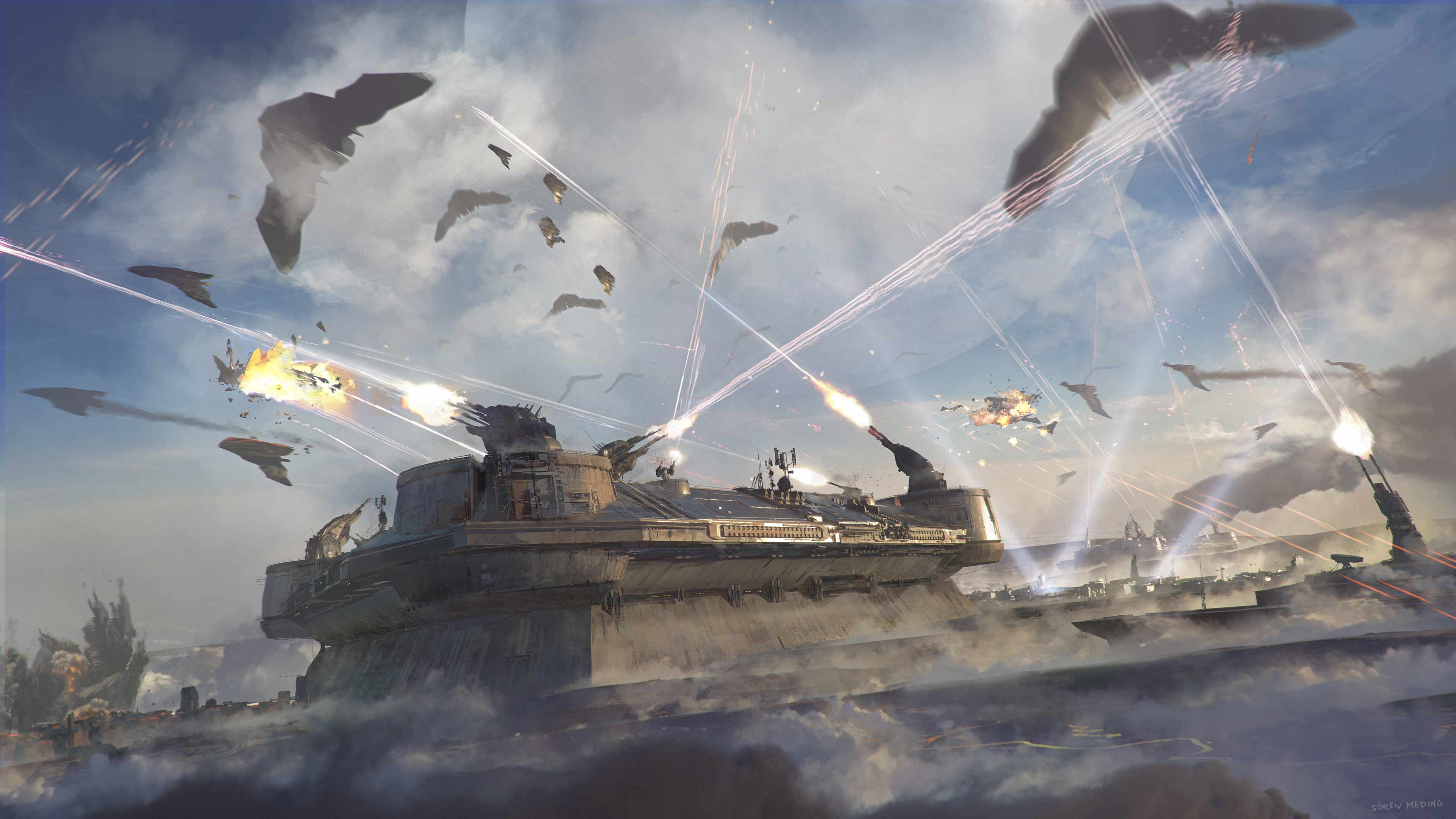
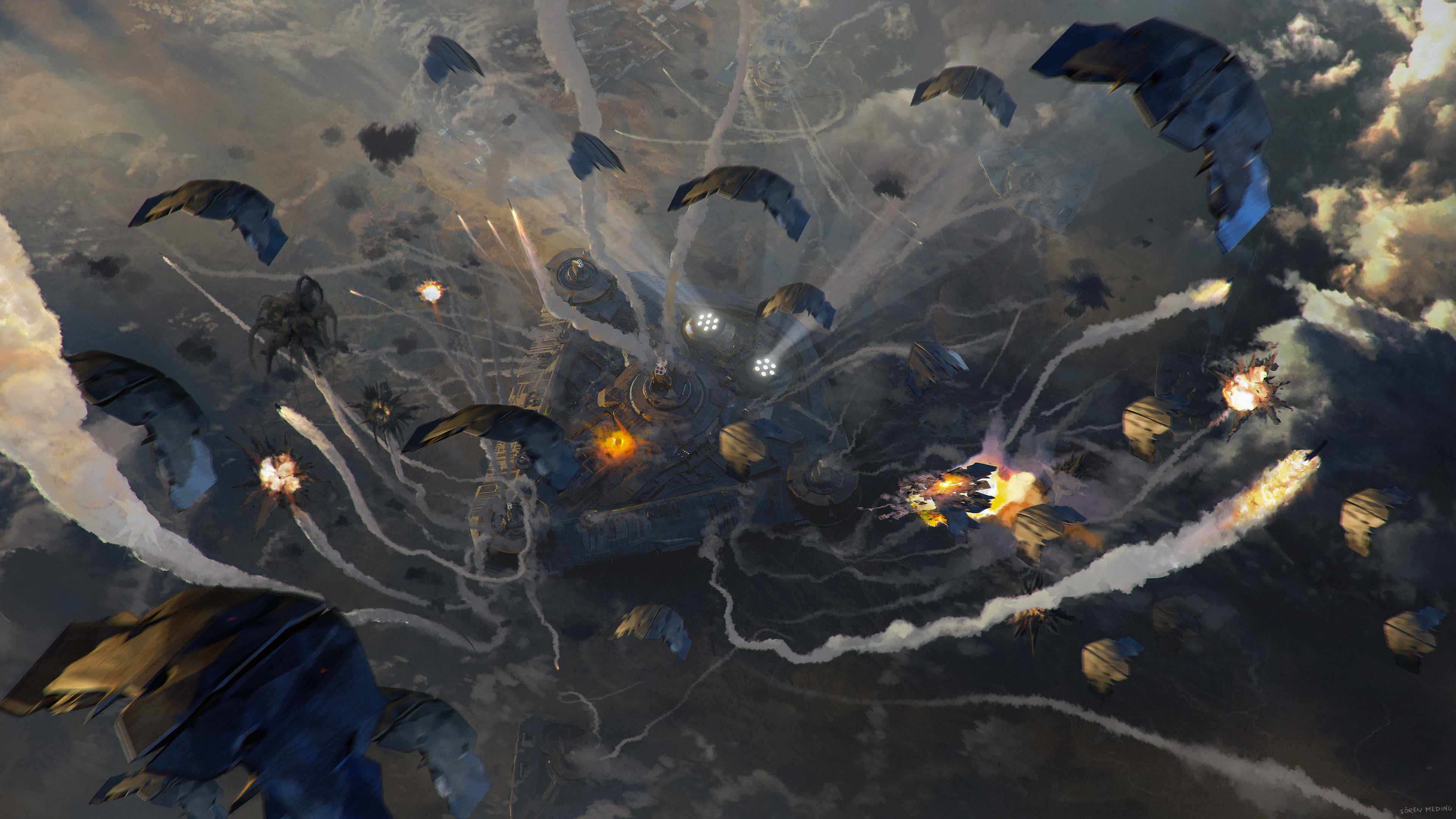
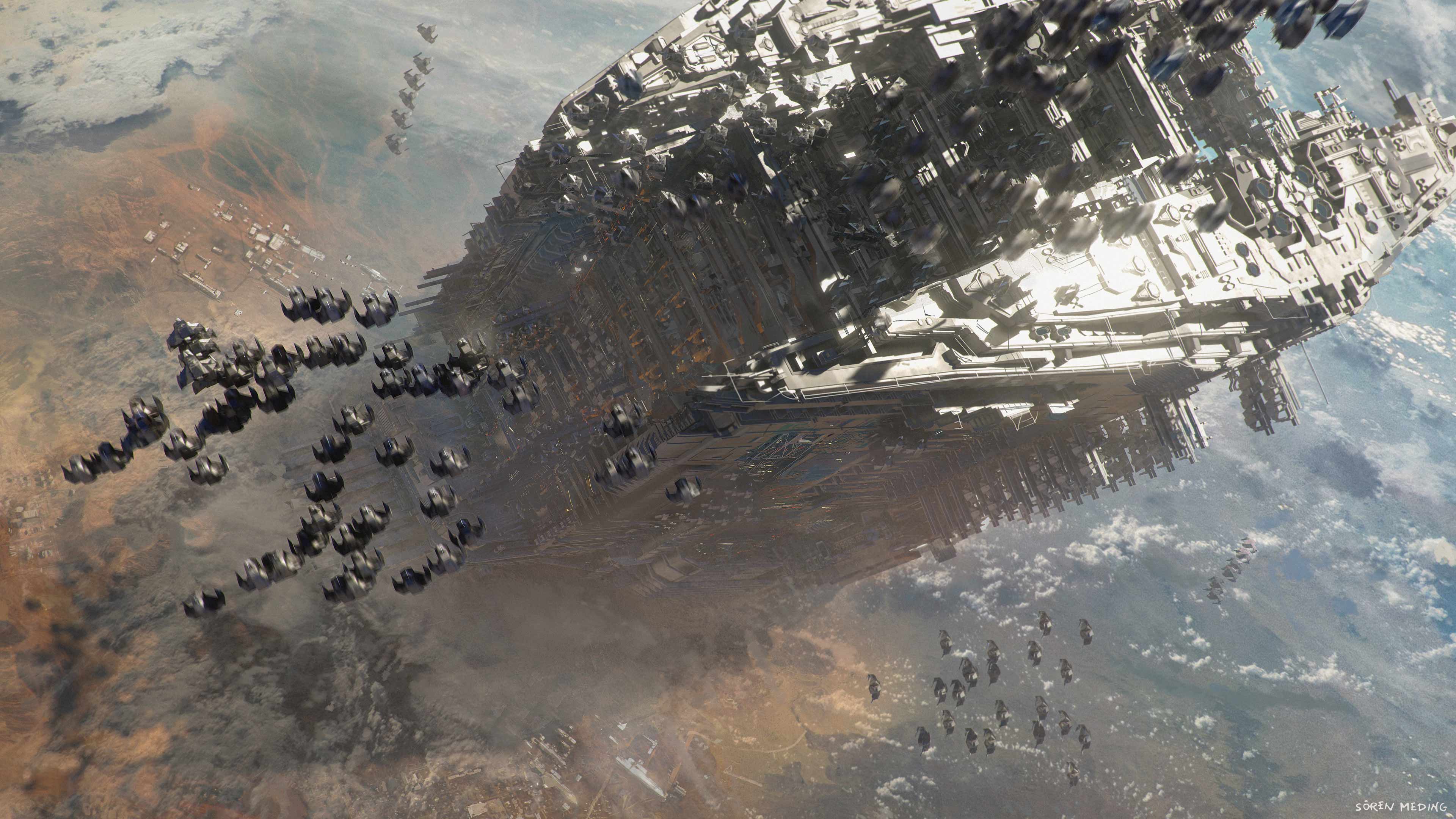
Aiming for the right shot to convey my ideas
With all the 3D elements from above, there was enough material to create a proper kitbash set. I roughly assembled several environments, more like dioramas, placed cameras, and added basic lighting. This resulted in many variations and plenty to choose from.
I had a lot of artistic freedom, so I continued developing multiple shots like these (for example, #1 and #3).


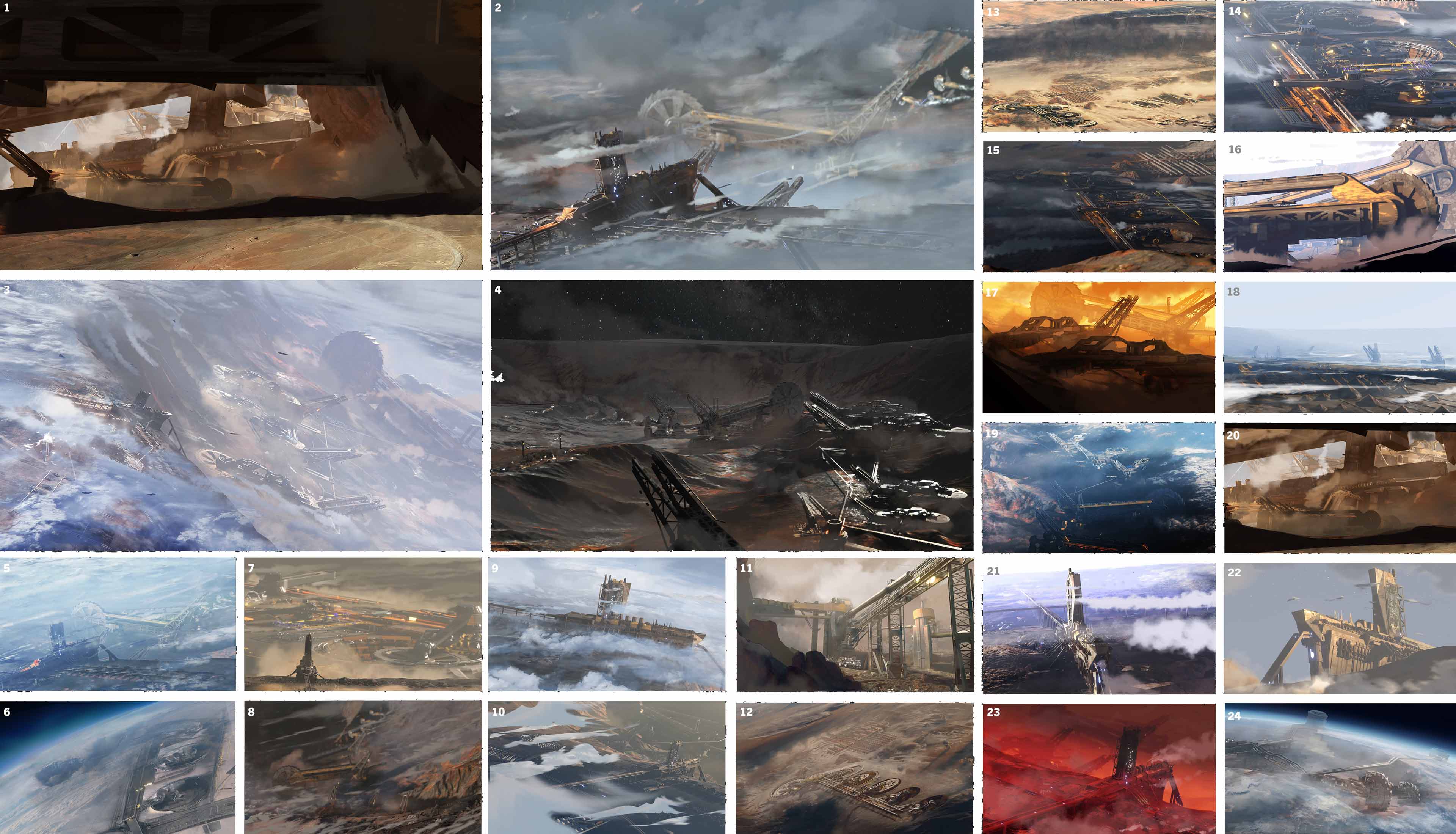
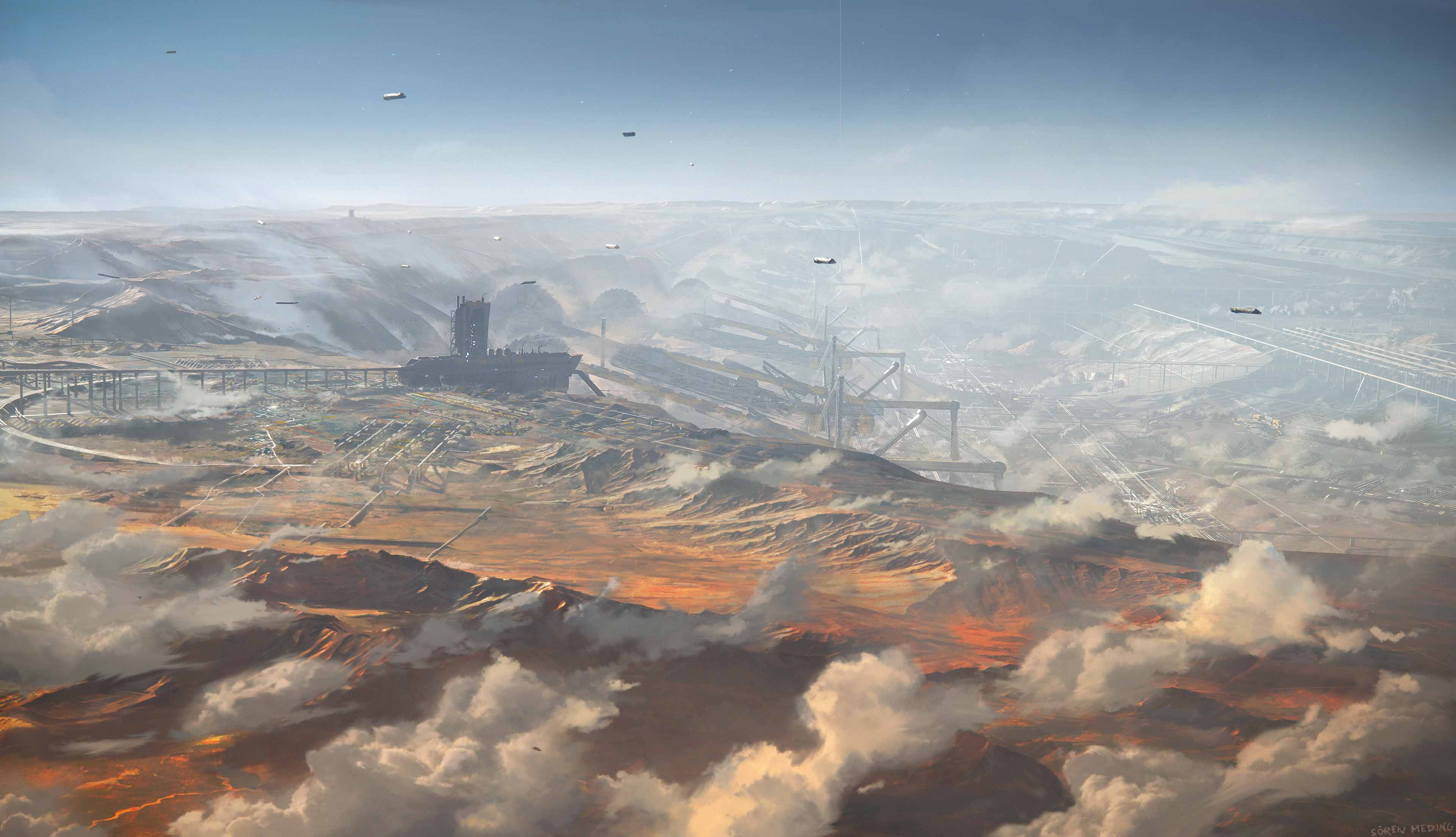
I developed and refined these artworks further. One of the main challenges was conveying the scale. I initially tried using clouds, and later the curvature of the horizon, to emphasize the immense size. However, even modern open-pit mines on Earth are incredibly vast, so this had to feel even bigger.
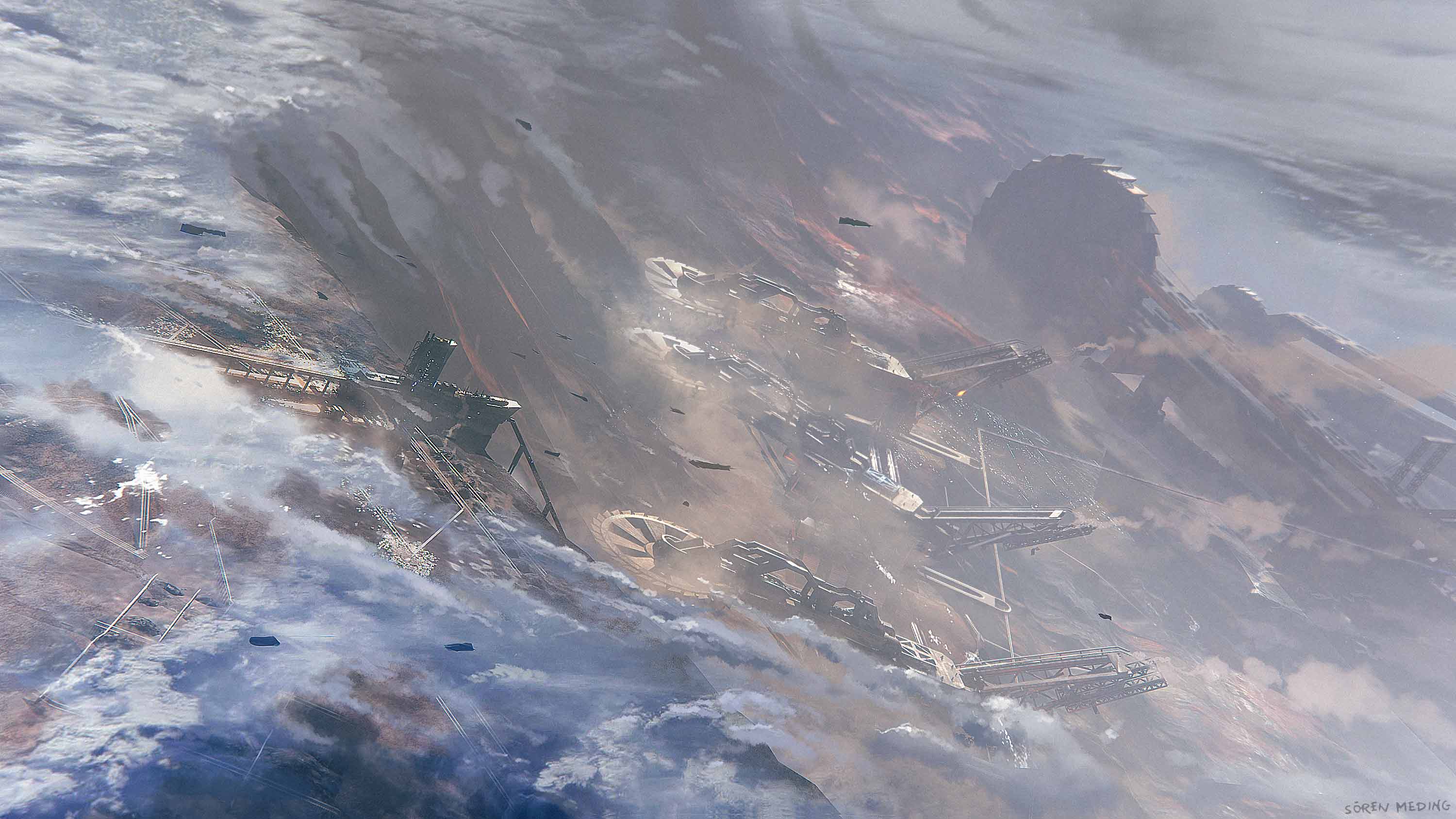
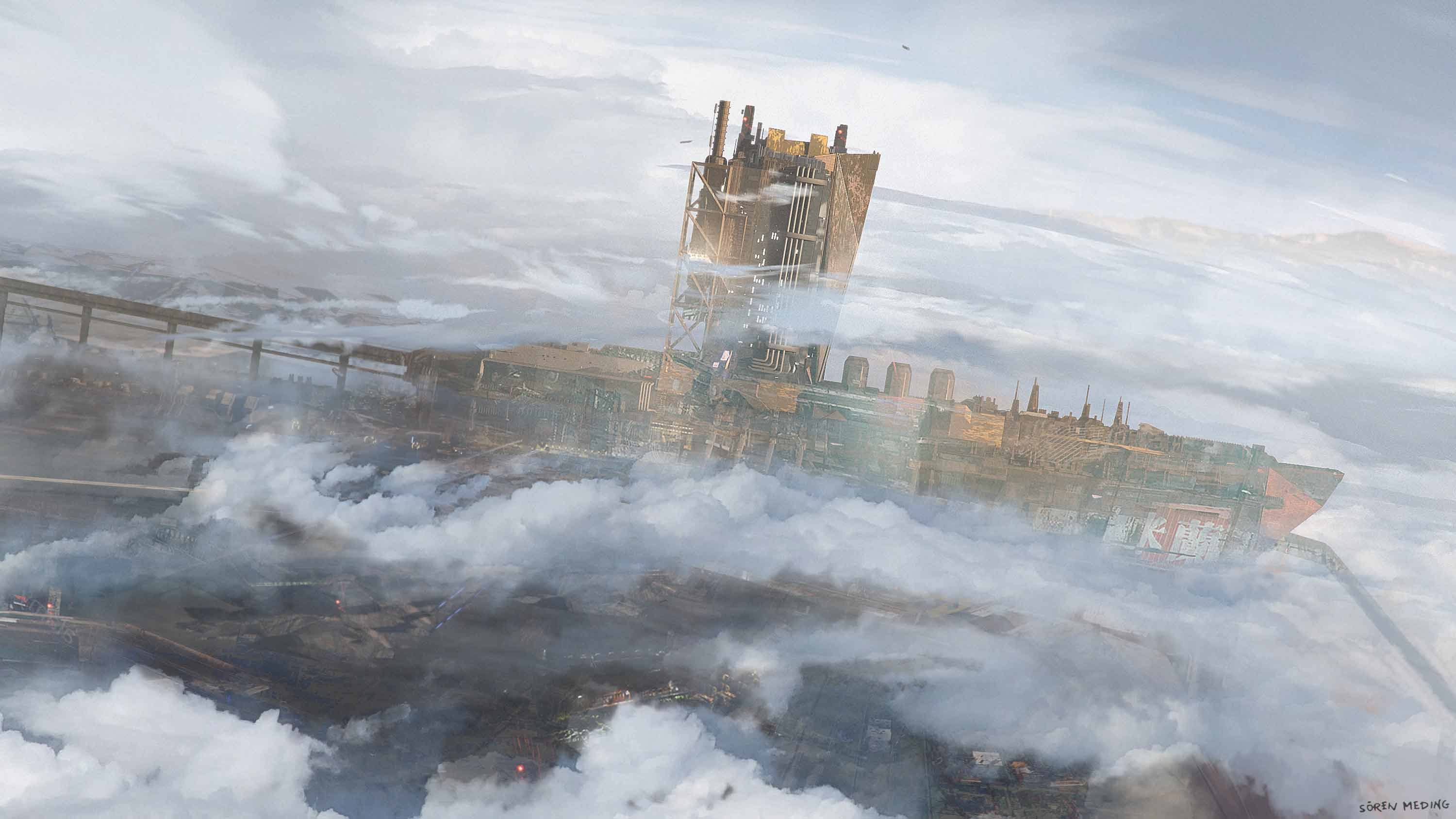
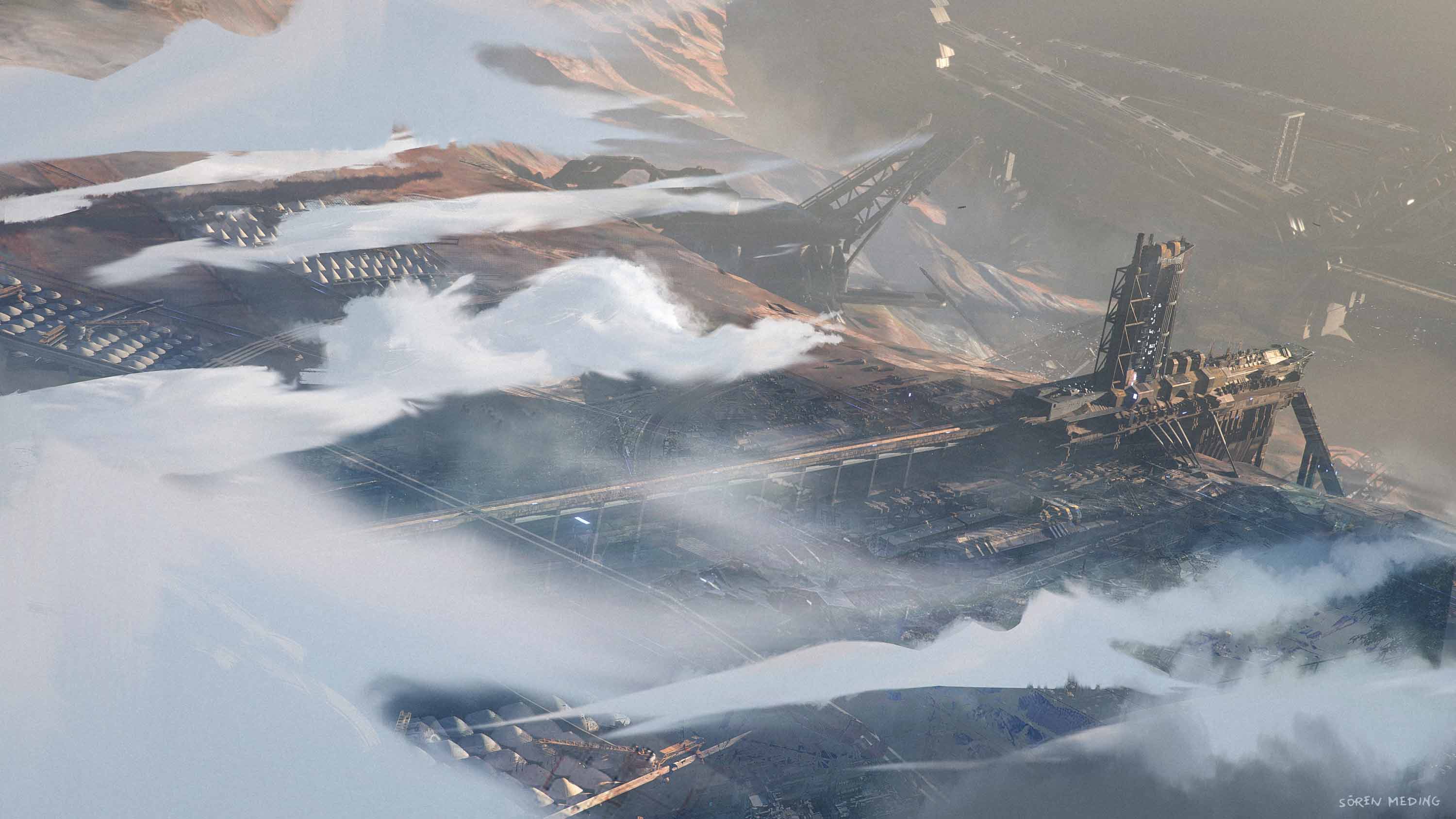
↓ This approach worked a bit better in terms of conveying scale. On Earth, we barely scratch the surface of the crust, just a few meters deep. But on our fantasy planet, it’s potentially possible to drill much deeper. The conveyor belts, more like conveyor highways, transport the extracted material away. The overburden piles up into entire mountain ranges.
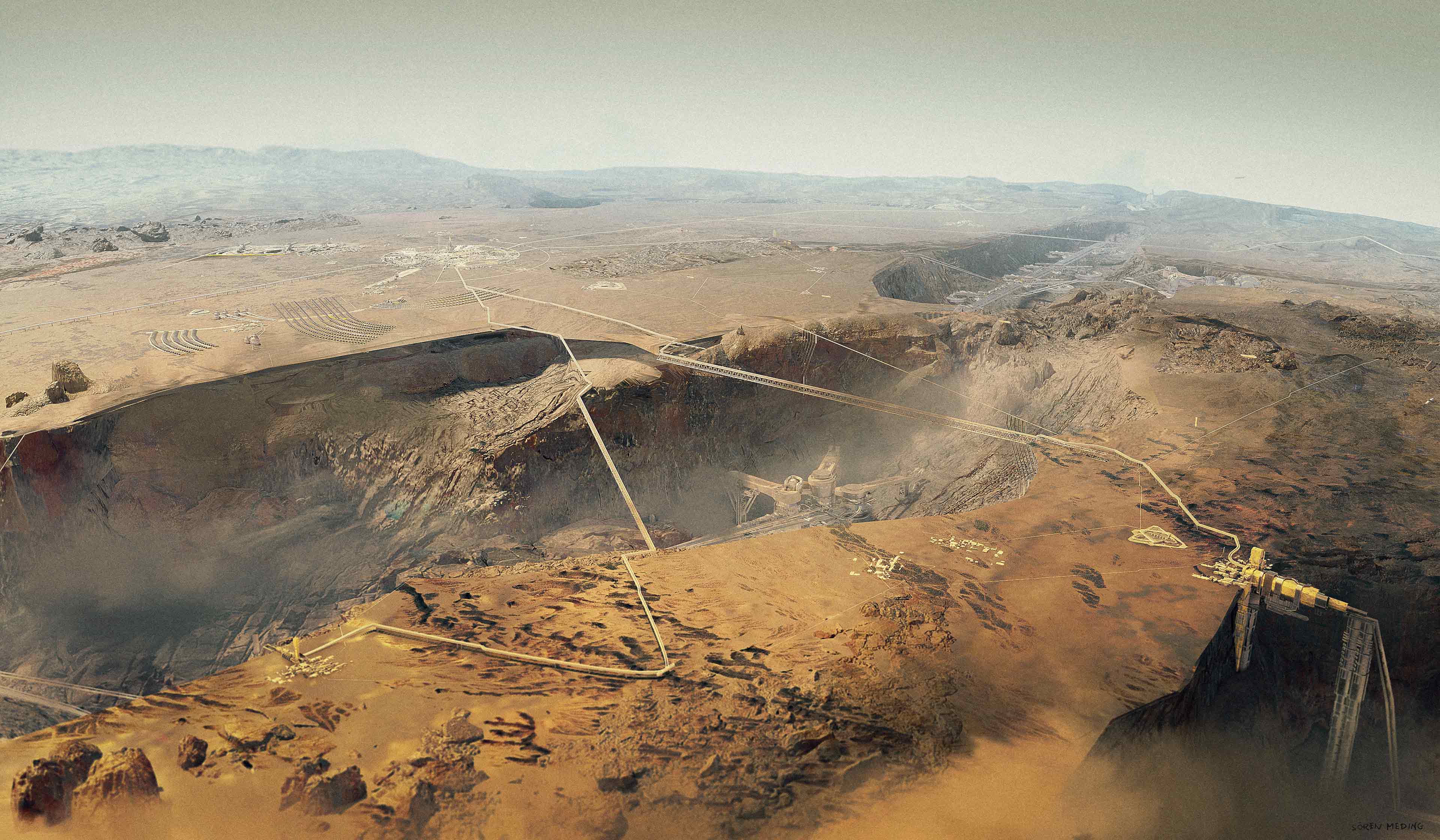
↓ As soon as the shot reveals the atmosphere, dark space in the background, cloud formations reminiscent of NASA imagery, it immediately signals: this is massive. You can see enormous factories, cities, and settlements that have developed around the site. I wish I’d had more time to explore this shot further: to show distinct rock layers, more intense mining activity, and to research how the clouds and climate might react to the removal of such vast amounts of surface. It would likely generate extreme winds and dramatic climate shifts. Maybe even lead to the formation of an ocean at the bottom.
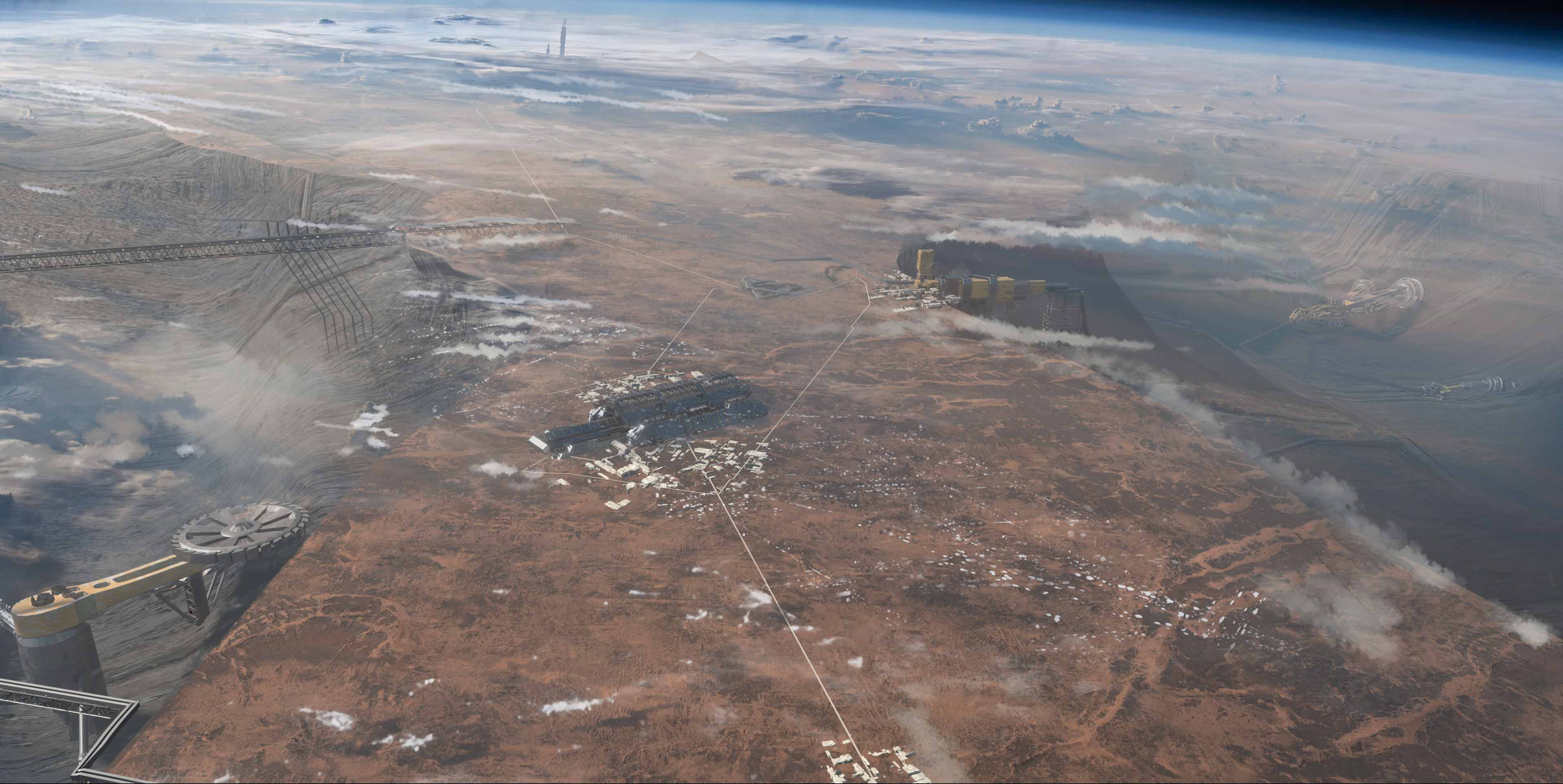

↓ We’ve already established that the facilities are overwhelmingly massive. The following concepts helped me better communicate and understand their true scale on the ground.
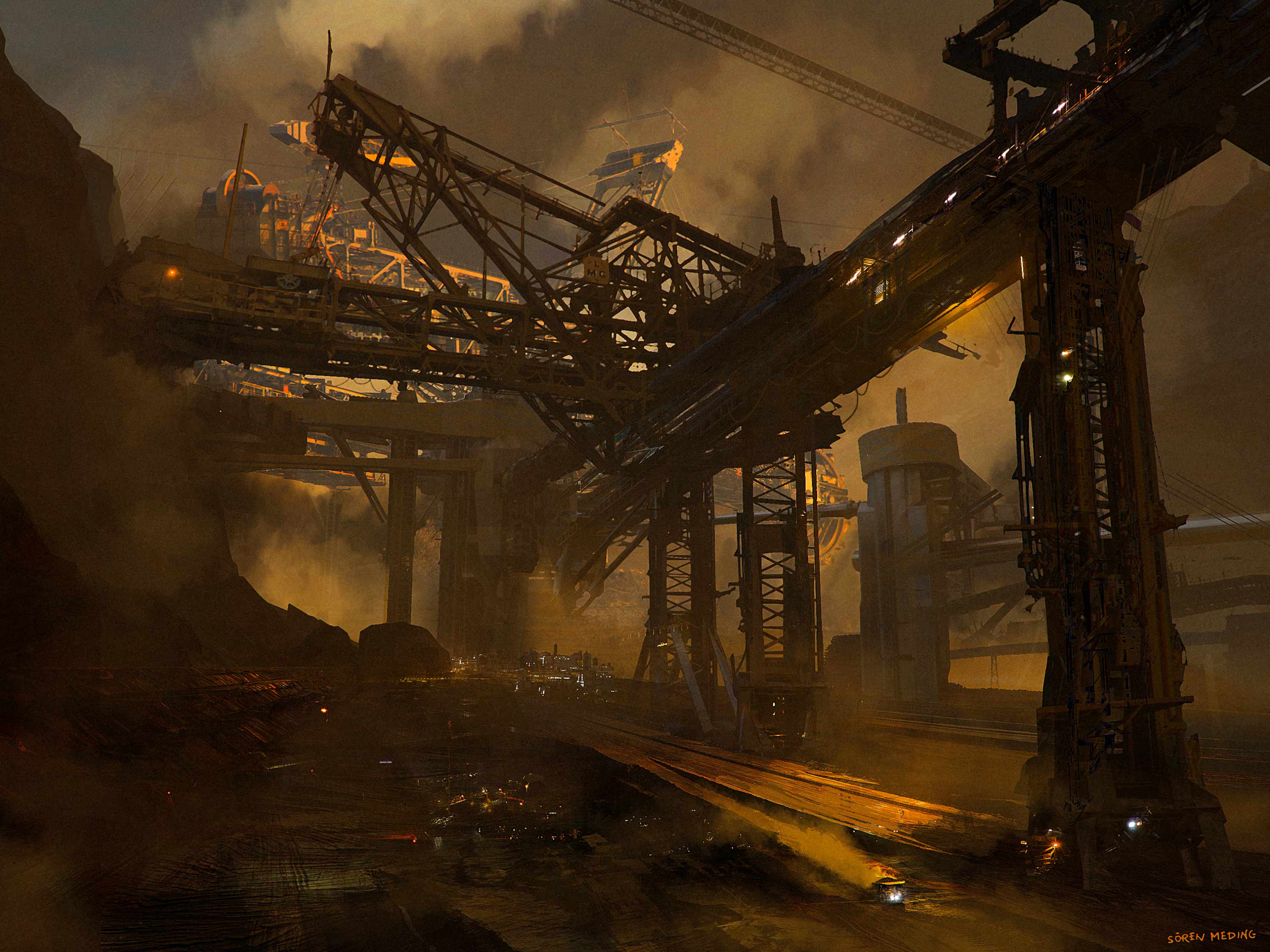
↓ Different iterations for the hub.
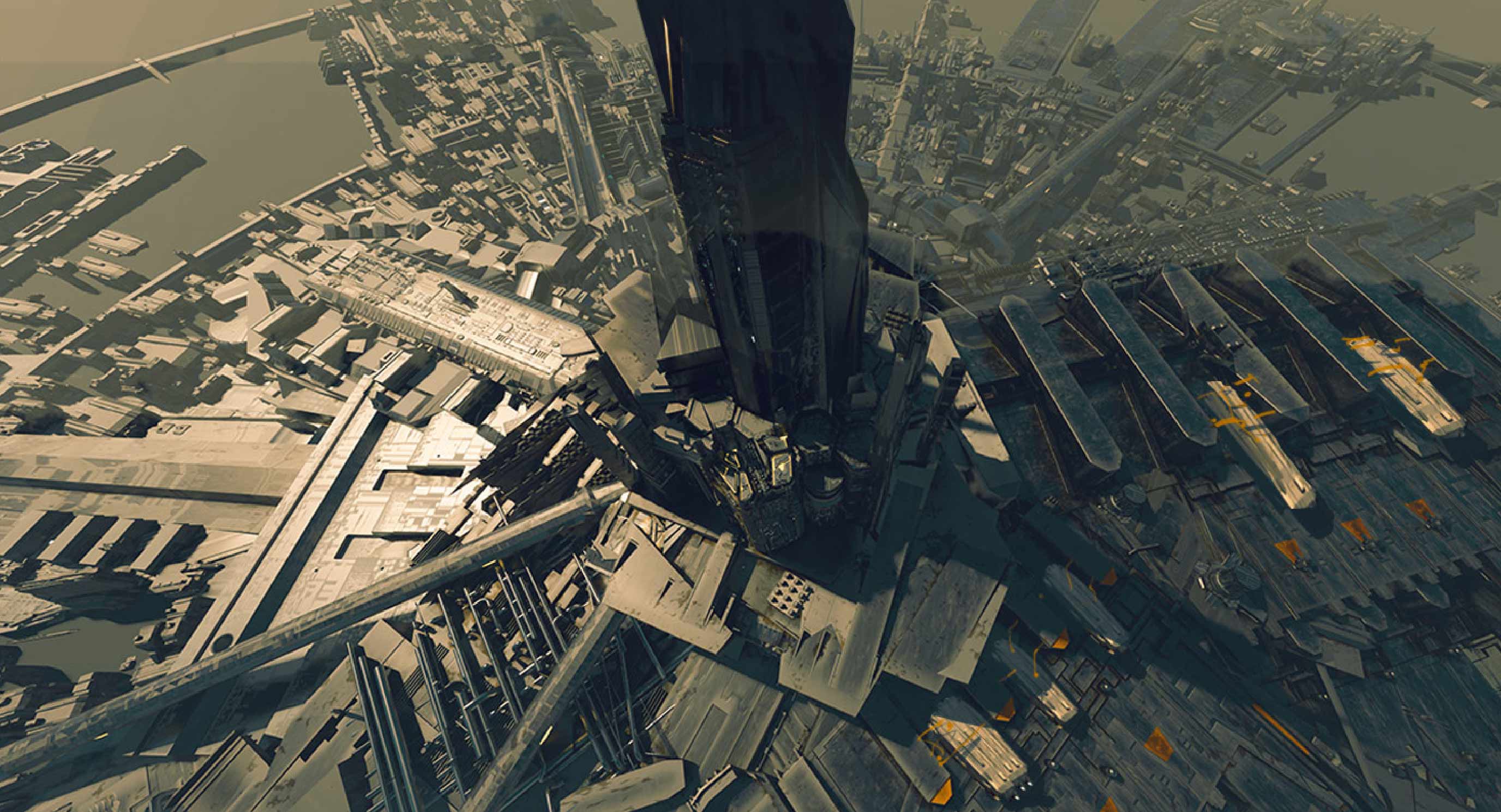
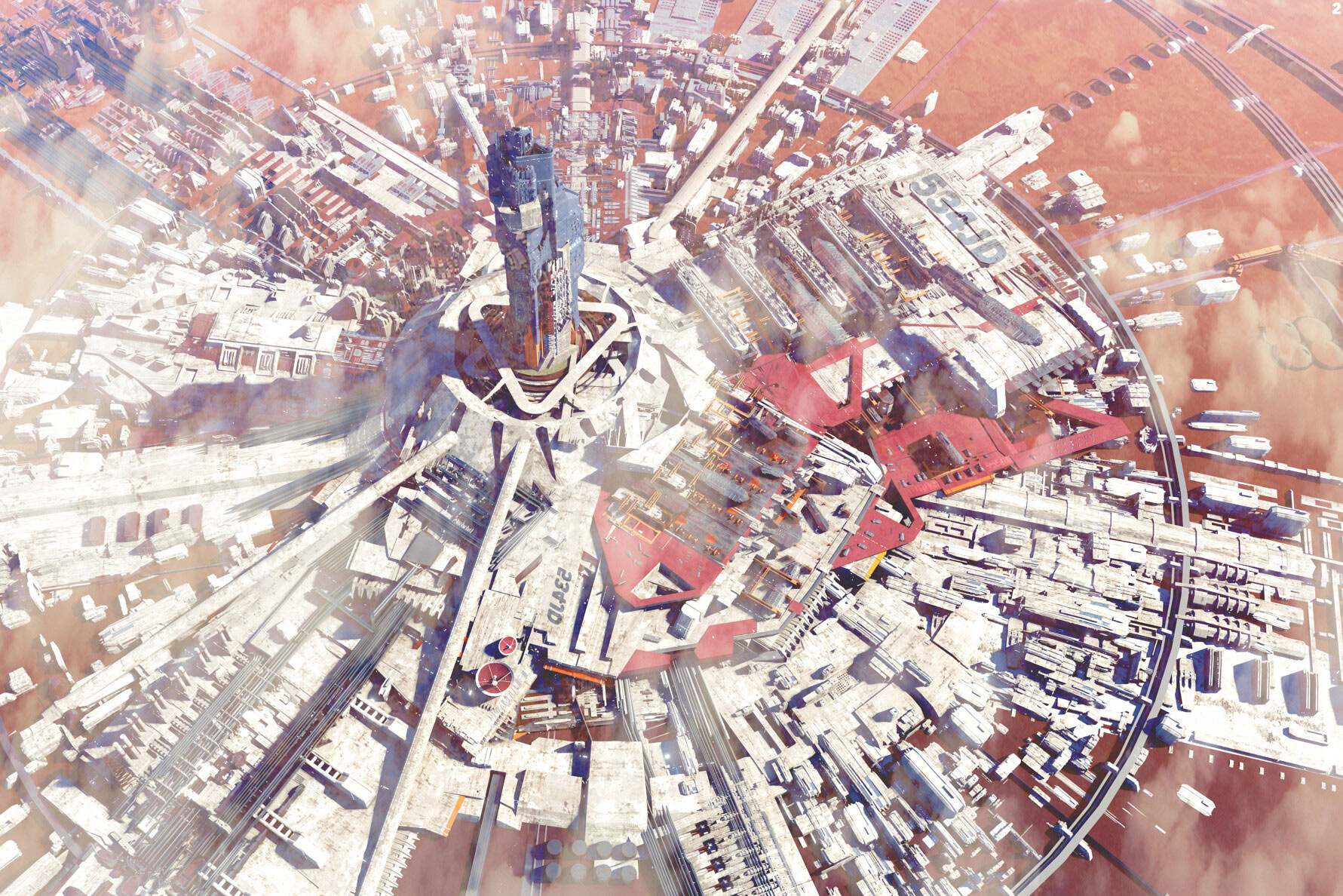
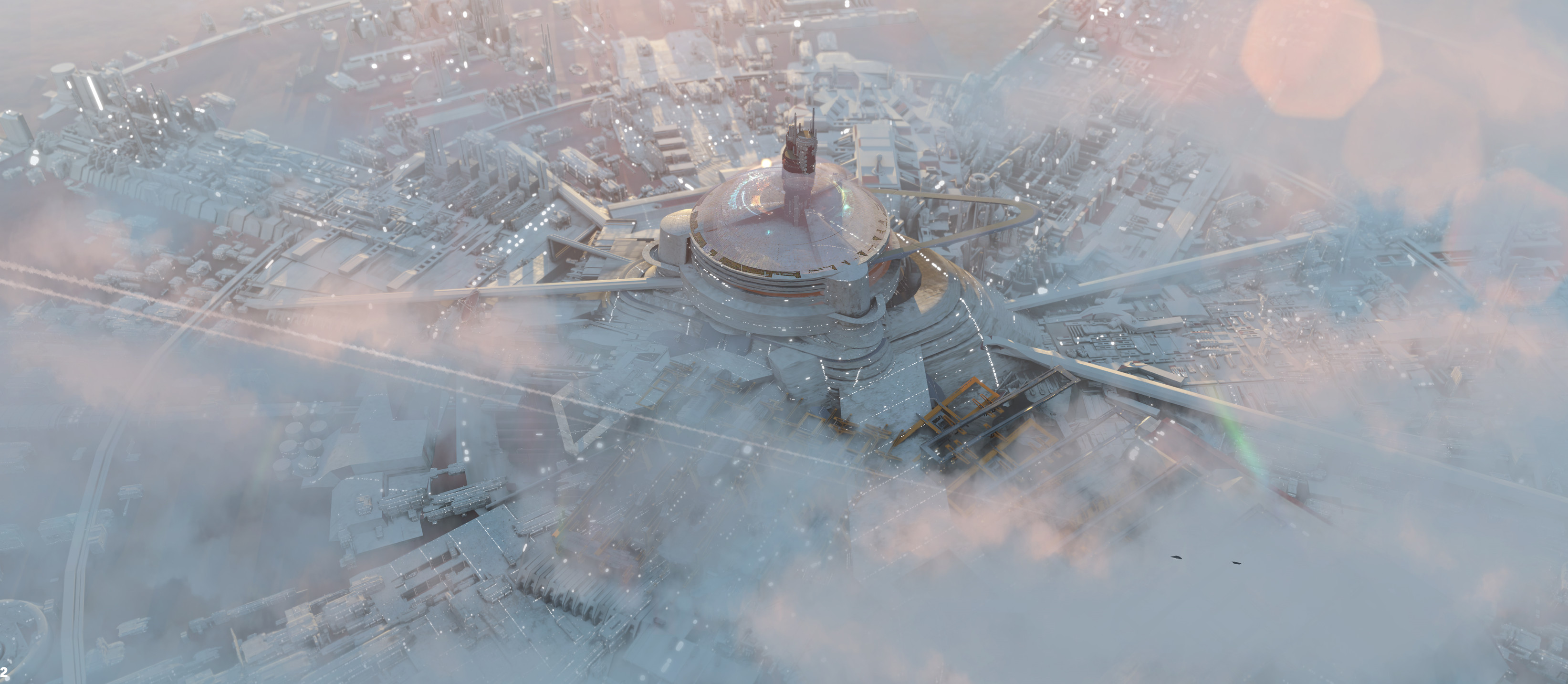
↓ I decided to invest some time in illustrating the large-scale mining equipment in more detail. Introducing vehicles and people for the first time really helps convey the scale.
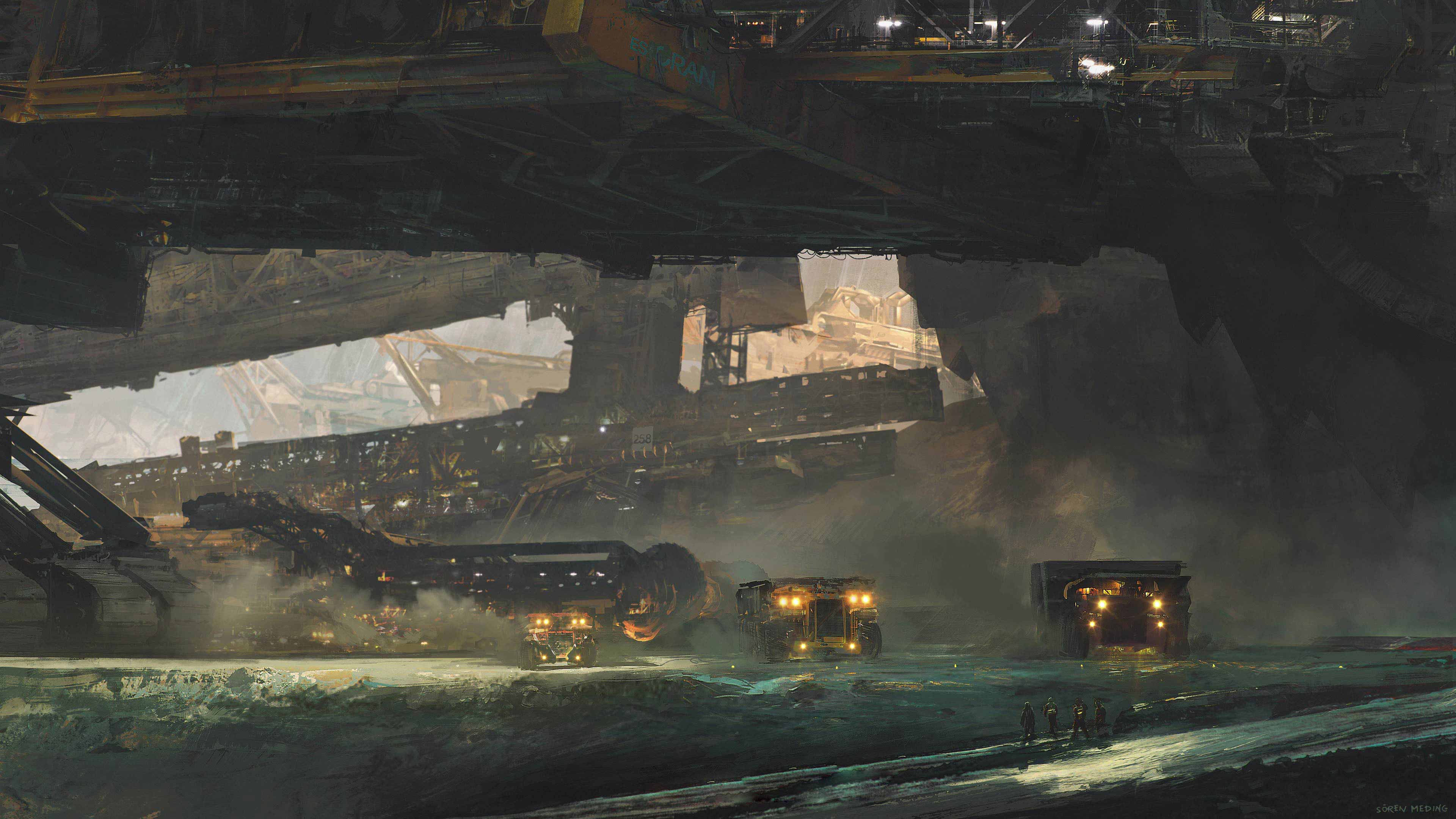
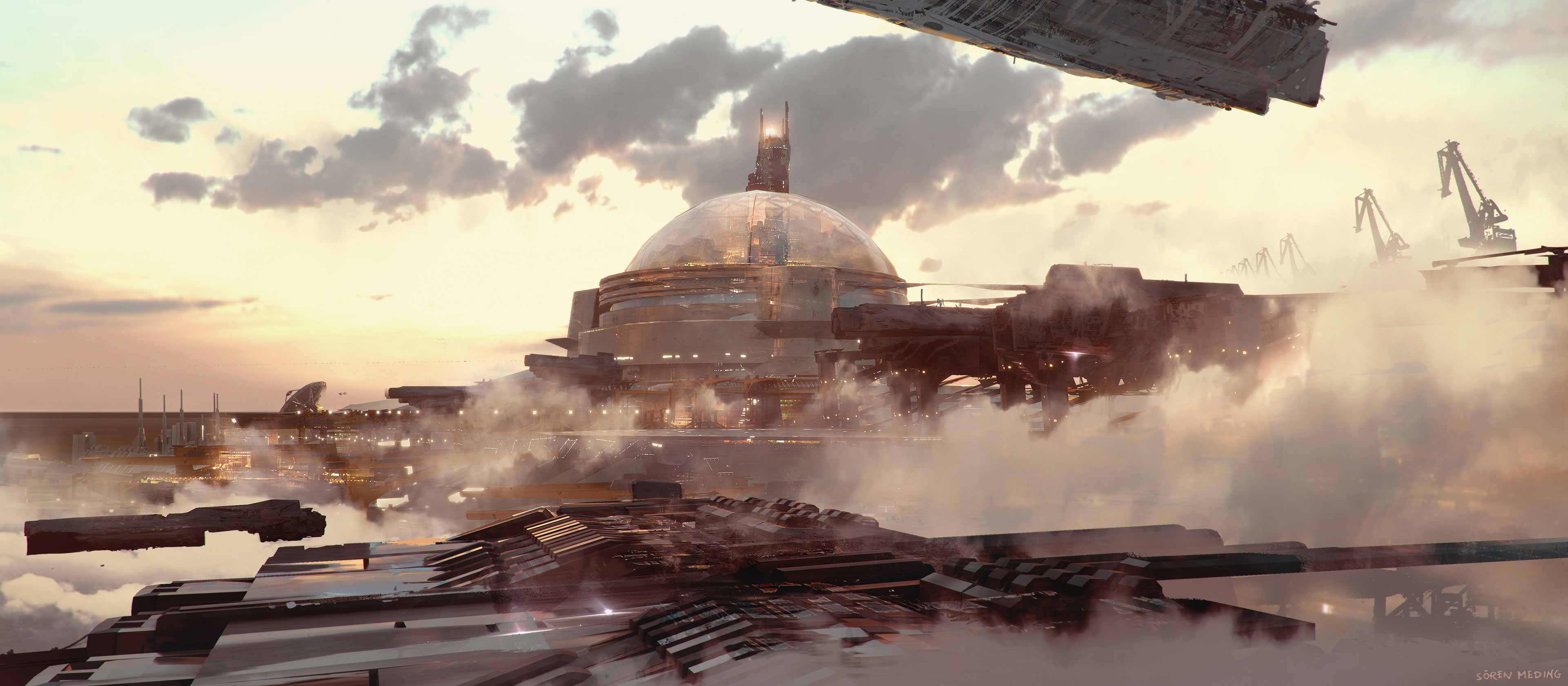
Several artworks have emerged depicting the central distribution hub. I live in Hamburg, a city known for its major harbor, and those influences often find their way into my work.
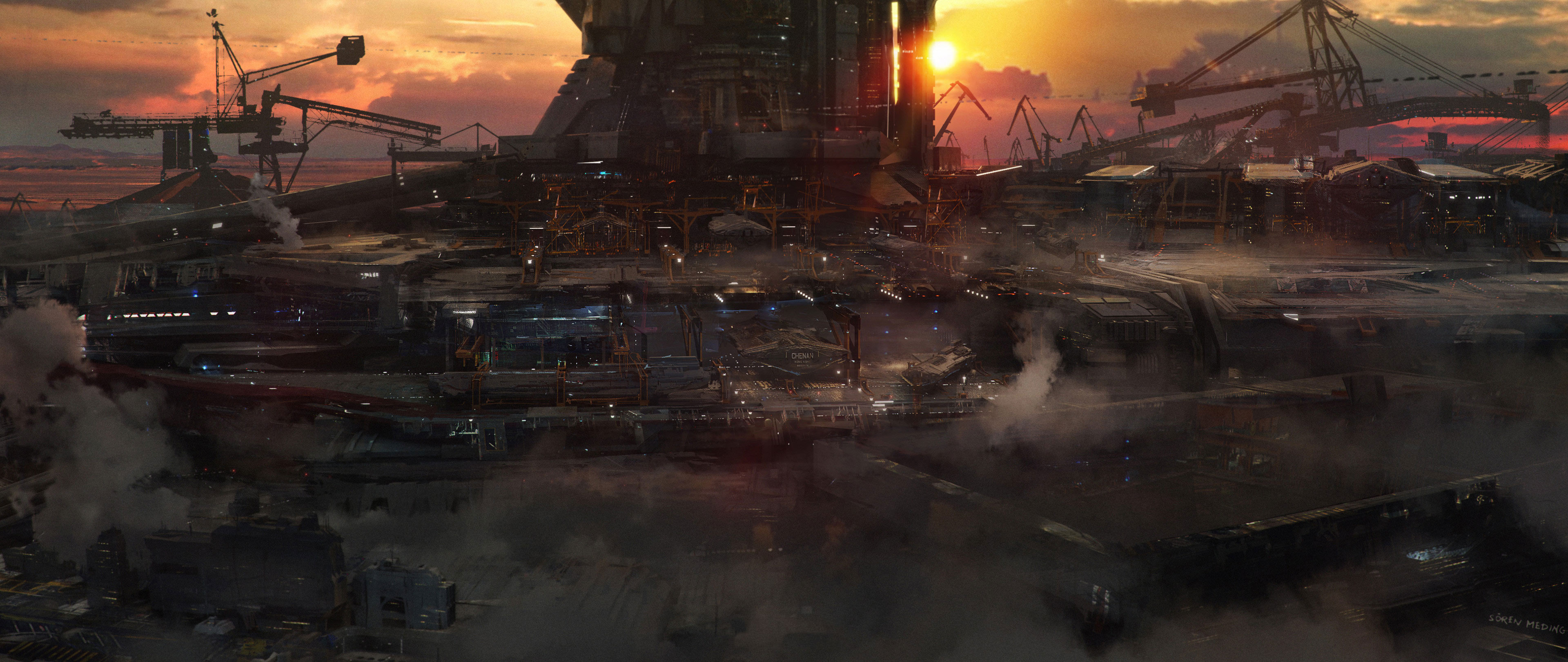
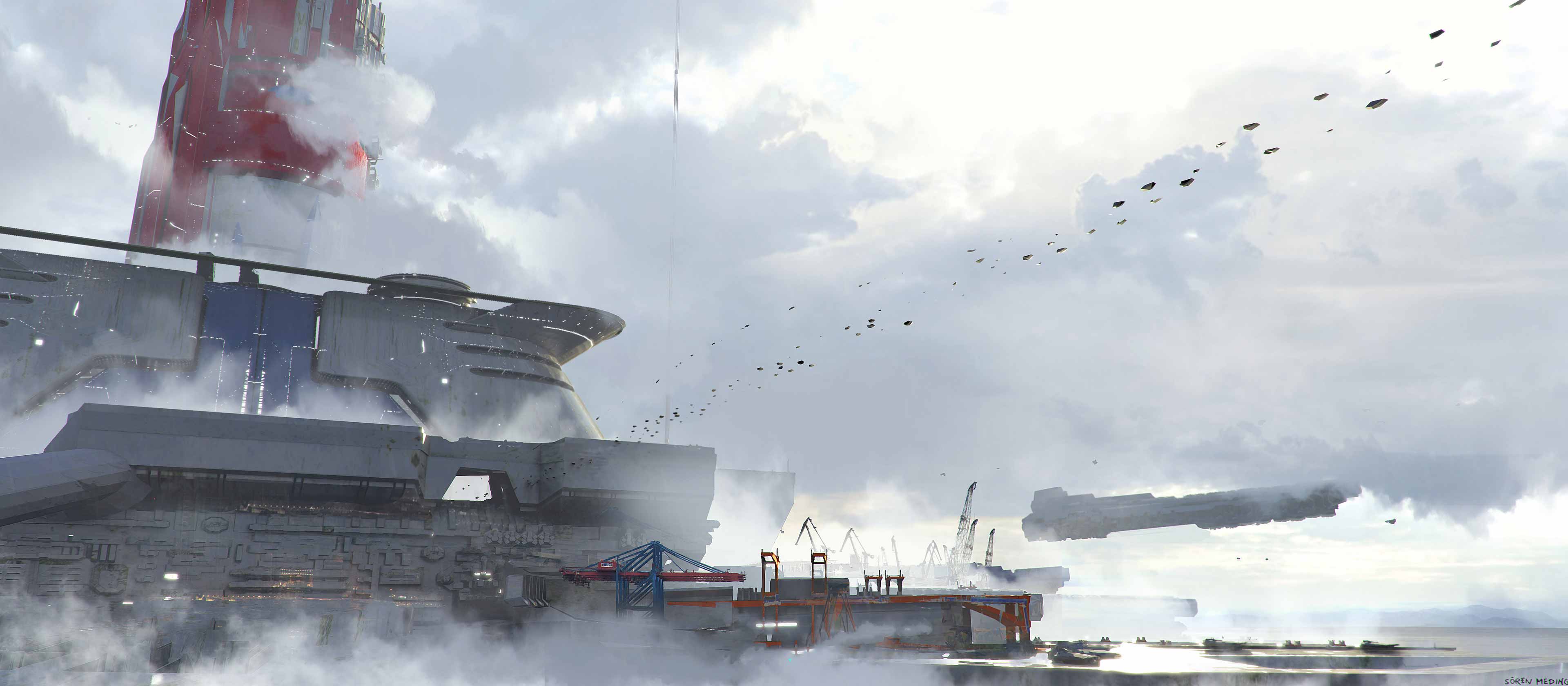
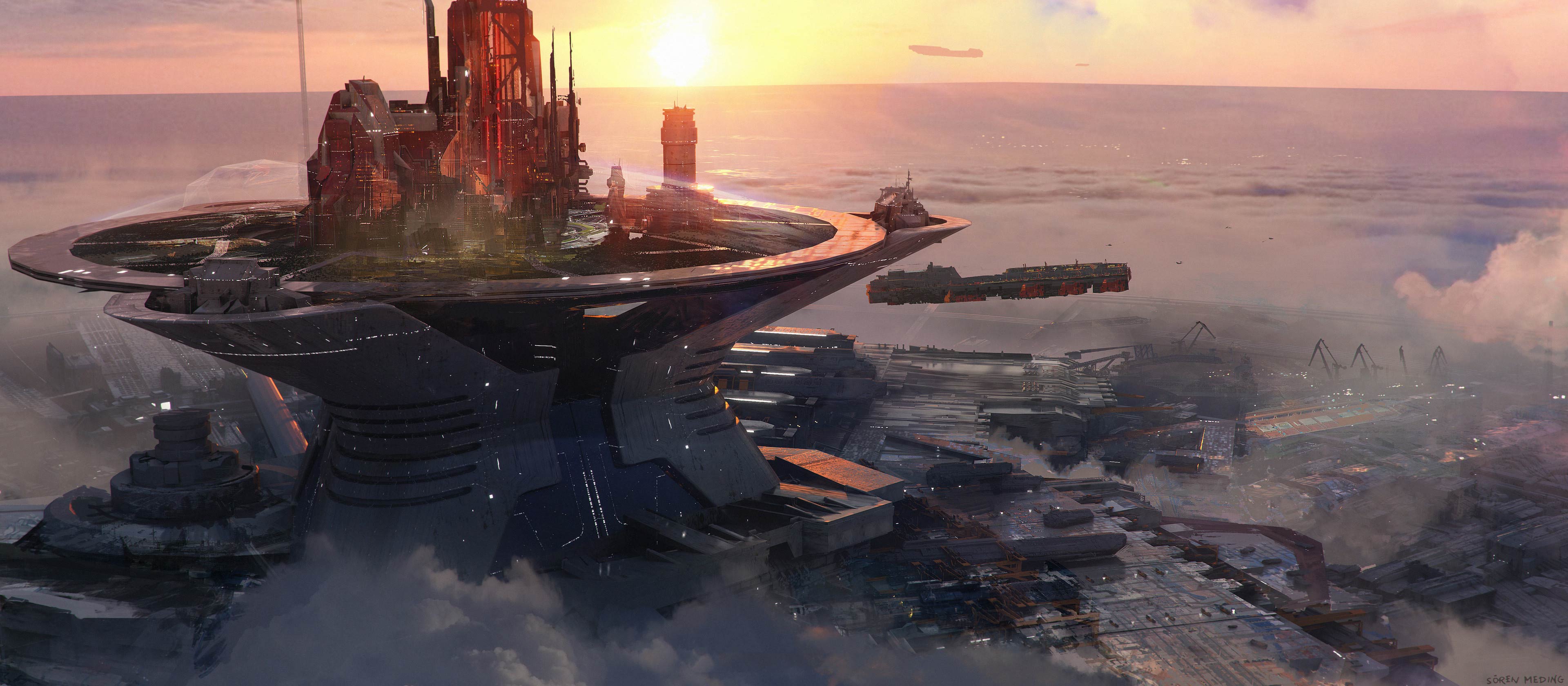
↓ All the insights and learnings came together in this final artwork, which envisions the entire concept: the planetary scale, the vast open-pit mines, or more accurately, the subtraction of the planet itself. Clearly visible is the central circular hub, featuring bulk material storage, conveyor systems, freight piles, and a city at its core. You can also spot the massive power plants to the right of the hub, as well as others further out on the horizon. At the bottom edge of the image, there’s a clear view into the mining zones. Triangular fortresses provide protection, while freighters transport the valuable resources to the large processing industries beyond.
